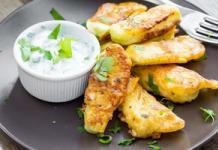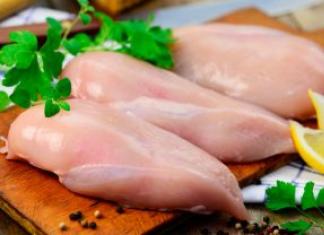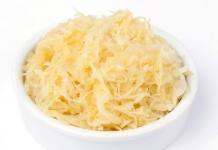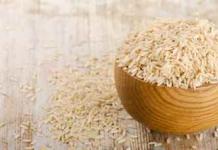An integral part of any trip is foreign cuisine, special dishes and unusual tastings. And if you choose this type of tourism as gastronomic, then atypical treats are literally a must. In particular, we are talking about fruits. But not everyone, going somewhere in a warm region, knows exotic tropical fruits and their names well. We will try to introduce you to the most interesting desserts of the foreign world.
Guava is the sister of the Ukrainian pear
Very similar to our pear and slightly sour in taste, guava is a fruit that grows in the tropical zone, Mexico, South America, India and parts of Southeast Asia. Outwardly, it looks like a 10-14 cm yellow-green oval. The fruits ripen on small deciduous shrubs.
Eating stale guava is just as dangerous as eating other fruits. At the very least, you are at risk of indigestion. In addition, underripe guava is quite sour and unpleasant, astringent in taste. When these exotic fruits reach the "desired condition", they will become tasty and healthy enough.
Guava is recommended for use in case of intoxication, as well as for weight loss and all sorts of minor inflammatory processes of the gastrointestinal tract. Freshly squeezed guava juice and its seeds have a positive effect on the stomach. You can eat the fruit along with the peel, but we recommend that diabetics be careful with this, as it increases the level of glucose in the body.
Dragon eye is a fruit with an abundance of vitamins
This exotic name was given to an unusual-looking and slightly melon-like fruit. In everyday life, the dragon's eye is called longan, which grows in Thailand on high 10-meter trees. Lush crowns of trees hide round yellow fruits in their midst. If you peel them off, you will see white flesh inside. It is extremely beneficial due to its high trace element content. In particular, we are talking about organic acids, protein, calcium, copper, zinc, phosphorus, iron and much more.
Due to its original sweetish taste, the fruit is extremely popular among locals and tourists. It is either peeled and eaten raw or cooked in rice dishes. Served with stewed cereals and coconut milk. Also, local craftsmen make sauces from longan, and even ice cream. The negative properties of the fruit were not noticed, but we do not recommend overeating the dragon's eye.
Carambola is a star on your plate
Carambola is an extremely popular and well-known fruit not only in Asian countries, but also in Ukraine. Due to its unusual type, carambola is used as an element of decoration for haute cuisine dishes. The size of the fruit is a large goose egg, the color is yellow, and in the context of the carambola it resembles an asterisk.
You can eat both the pulp and the peel. This fruit is useful both raw and fried. It tastes slightly sour or sweet. Tourists cannot agree on what kind of carambola tastes like, what it looks like. Someone reminds of a plum, someone grapes, someone an apple. But everyone says that the fruit is extremely tasty. The fruit contains sodium, iron, calcium, phosphorus, vitamins of groups B and C. Carambola is either served raw or deep-fried, and can also be boiled in sweet syrup.
Eggplant or mangosteen?
This fruit has several names - mangkut, garcinia, mangosteen and, of course, mangosteen. It grows in South Asia, on the territory of Vietnam, Thailand, India. This berry looks like a rounded purple-burgundy eggplant. It weighs 200 grams, and when cut looks like white pulp. The inside of the fruit is soft, melting and zifiriform. Very sweet in taste, mangosteen is a fruit that serves as the basis for various jams, desserts, nectars, syrups and juices. Also, the popularity of the fruit is based on the versatility of flavors - chefs note echoes of peach, pineapple and lychee in garcinia.
Also popular is the peel, which is used in folk medicine... But we strongly do not recommend eating fruit during pregnancy and breastfeeding... And also in case of diseases of the gastrointestinal tract, kidneys and liver.
Noyna's sugar apple
Another name for the fruit is sugar apple, which is really very sweet. However, the taste is more reminiscent of late apricot, which does not make this treat less popular and tasty. Noina grows in the tropical zone, and is used from roots to fruits. Decoctions and tinctures of leaves, roots and bark help with fever and even dysentery.
When choosing noyna on the market, be careful, it is important to buy ripe fruit, otherwise you run the risk of poisoning. Noina should be greenish, heavy in feel and soft to the touch. Well, of course, the fruit should smell very good and delicious. When eating the fruit, do not eat seeds - they are useful only in the field of cosmetology and exclusively in the form of oil.
This thorny cone may not be seen on the branch, but it is very popular with Asian gourmets. Another name for this tropical delicacy is sour cream. It has a sweet and sour taste and contains many beneficial elements. Researchers massively claim that sirsac is capable of treating cancer. In Chinese medicine, dried fruit powders are added to medicines and tablets.
European scientists in the course of research have found that the fetus actually stops the spread of the disease and reduces the activity of cancer cells. Sirsac cannot fully replace chemotherapy, but it can help prevent the disease. But, despite the pleasant taste and useful properties, do not overdo it with tasting. An excess of fruit can lead to intoxication and even hallucinations.
Chocolate Chiku
The chiku fruit has a second name - sepodilla. It looks like beige or brownish balls, inside - orange pulp and large black oblong seeds. Chiku is eaten raw, separated from the bitter rind and hard seeds. The fruit has a caramel flavor, and some varieties have a coffee and chocolate flavor.
Chiku is soft in consistency and should be large enough. Before use, sepodilla is recommended to be cooled, cut in half or into slices. The pulp can be eaten with a spoon, or simply bite off the peel like a watermelon or melon.
Pitahaya - dragon fruit
Unusual, beautiful, bright, called the heart of the dragon, the fruit is widely known to the public. But few people know what it tastes like. Depending on the variety, the pitahaya looks different. White has a pink peel and white pulp, red has a pink peel and red pulp, yellow has a yellow peel and white pulp, respectively. All of them are popular and unusual in their own way, and they are also extremely useful. Particularly due to its high fiber and antioxidant content. And also pitahaya is recommended for diabetics, as the fruit lowers the level of sugar in your blood.
Desserts and juices are prepared from the fruit, and the pulp is added to salads and light dishes. Can be eaten raw by cutting in half and eating the flesh with a spoon. The rind is beautiful but not edible. Often, fruit rind "bowls" are used as decoration.
From side effects there is only an allergic reaction, as well as indigestion when overeating.
Exotic Lychee Fruit
It is a Chinese plum that grows in clusters and has a pinkish-reddish color. The fruits are covered with a peel with convex pimples, inside there is a soft light pulp and a small stone. The lychee tastes like grapes, and the consistency is like hardened jelly.
You can eat these fruits, they are tasty and memorable. When choosing a plum, be sure to touch the berries themselves, they should not be too soft or darkened. If the lychee is dark burgundy, it means that it has been on sale for a long time and is no longer particularly fresh. Alternatively, you can try dried lychee. Syrups are made from it, jelly is rolled up and even added to ice cream.
The abundance of potassium, magnesium and C vitamins helps to strengthen the cardiovascular system. And also Chinese doctors recommend the use of lychee for those who suffer from high cholesterol levels.
Kiwano cucumber melon
Horned melon ranks high on the list of the most beautiful tropical fruits. Yellow-green prickly peel, as well as green pulp, similar in consistency to citrus fruits. This fruit is definitely worthy of a place both on your plate and in the Instagram feed.
Another variant of the name Kiwano is horned or Antillean cucumber. It grows in New Zealand, central Africa and California. The melon has a cucumber-banana-melon flavor to taste, with a light kiwi flavor. Agree, this is definitely an unforgettable combination!
Do not overdo it with tasting, and at the same time remember that, within reasonable limits, the melon enriches the body with vitamins B and C. Cut it in half and eat the pulp right along with the seeds.
Ripe black sapote
Unusual in appearance, but original in taste, the fruit is extremely popular in Central America and Mexico. The ripe fruit reaches ten centimeters in diameter. Inside - sticky, slightly viscous pulp, as well as several large seeds. The main feature of the sapotas is the chocolate flavor. Really chocolate!
The peel of the fruit has green color, inside the flesh is black-brown. This fruit is rich in vitamin C and calcium, and it is also very good for those on a diet, as it contains almost zero fat content.
Thorny snake fruit
Another black and strange fruit that protects itself from unwanted hands. The fact is that the fruit is tasty and soft inside, from the outside it is covered with snake skin - a prickly brown-black skin. This is exactly what he is, an unusual herring or snake fruit.
Be careful when peeling the fruit. It is possible to cut yourself on small scales. But the pulp itself contains calcium, phosphorus, iron and beta-carotene.
But do not eat too much herring, despite the pleasant pineapple taste, if overeating, it can cause allergic reaction and poisoning.
Jaboticaba tree fruit
This fruit grows directly on the tree, even on the bark. The main area of its growth is Brazil. It is here that the fruit is used as an ingredient for desserts, as well as raw materials for liqueurs and wine. Jaboticaba also helps with asthma, dysentery and disorders.
The peculiarity of these black fruits is that they spoil quickly enough. You need to eat the fruit within two to three days after it was picked. That is why you can mainly find jams, preserves and jaboticaba syrups in shops and restaurants in Brazil.
Chocolate vine
It is a truly waste-free fruit that is used to its fullest. The chocolate liana or the more scientific name akebia is literally eaten all over. The pear-shaped fruit is cut in half or a small incision is made. The white, slightly pearlescent pulp is taken out with a spoon and served as a dessert together with the seeds. And the purple rind is stuffed with meat or seafood, and then baked and served. Even dried fruit leaves are served as tea or seasoning.
The chocolate liana tastes like raspberries, but the smell of chocolate remains here. Flowers also smell like chocolate fruit tree... Therefore, it is worth taking a walk near the akebia tree during the flowering period to enjoy the aromas.
Finger lime
This fruit reminds many of rolls with red caviar. But in fact, this is lime caviar, which tastes absolutely identical to regular lime. It is the appearance that attracts tourists.
The oval dark fruits contain reddish and pinkish caviar balls inside, filled with juice. It is the caviar itself that is used in the preparation of desserts and dishes from fish and meat. The fruit is remarkable in that it contains many useful, tonic and regenerating enzymes.
But be careful, as overeating can cause allergies. Also, finger lime is not recommended for those who suffer from ulcers, pancreatitis, gastritis, colitis and other bowel diseases.
Melotria rough
The peculiarity of melotria is that it looks like small watermelons. But the taste is more like a sour cucumber with a lemon aftertaste. It grows on climbing bushes and is a good cancer prevention.
The skin of the fruit is hard, and the flesh really resembles a cucumber. It is important not to let the melotria overripe, fresh and picked fruits on time are very tasty and healthy. You can also pickle or pickle melotria like a regular cucumber. It is pickled that it is most often served in Asian restaurants.
Little by little, it is recommended to consume this fruit every day, since it is useful for losing weight and is perfect for diabetics. But beware those who suffer from diseases of the cardiovascular system and intestinal tract.
Musical biriba
The fruit looks like a yellow, slightly blackening ball. The peel has scales, inside the flesh is white, the bones are small and black. Biriba tastes like lemon meringue, and it is harvested in the early stages, without waiting for full ripening. It matures already in boxes and on counters.
Mostly biriba is grown and sold in South America. The main indicator of maturity is a yellow, blackening peel. If overripe, the pulp will not be edible and bitter.
Ripe fruit is eaten raw, and sometimes juices, syrups and even wine are made from it. And musical instruments are made from dried fruits!
Wonderful berries
These berries are similar to barboris, they are red and quite large. They are called wonderful due to their unusual effect on taste buds. After tasting the berries, any food you eat will taste sweet to you. All this is due to the content of glucol-protein. It desensitizes the receptors for all flavors except sweet. The effect of sweetness lasts up to two hours.
Don't overeat, of course. But some bizarre, miraculously useful and medical properties have not been found. At the same time, the miracle berries are good for those who are now on a diet, it will reduce the consumption of sugar in your diet.
Tamarillo or tomato?
Despite the fact that tamarillo is a fruit, but by outward appearance and tastes like a tomato. It has a red-orange skin color, and a red-burgundy flesh color. The shrub itself, on which tamarillo grows, also looks like a tomato bush that has surpassed its size.
Depending on the species, the fruit tastes differently and is consumed in different variations. Red is the widest variety and has orange sweet flesh, and is used as a decoration and additions to main dishes. Yellow is sweeter and smaller in size, orange is less sweet and juicy of all.
The skin of the fruit is not eaten, it is too tough and bland. The pulp has a juicy consistency of sweet taste, contains vitamins of groups A, B and C. It is also low in sugar, so the fruit is suitable for diabetics. It will not be easy to peel the tamarillo, it is recommended to put it in boiling water for a few seconds or simply cut it and eat it with a spoon.
Tropical fruits offer an incredible variety of flavors, shapes and appearances. It is always very exciting to discover new and amazing dishes. But we recommend not only choosing the rarest fruits, but also making sure that you taste in the right and trusted place.
It is believed that a person needs to eat those vegetables and fruits that grow in his habitat, northern peoples do not need to feast on overseas pineapples, such an experiment will not bring any benefit, but it can do harm. However, few people, being in an exotic country, are able to resist the temptation to try an unusual fruit, or not to taste the forbidden fruit from the hands of someone who has just returned from the south. Numerous types of tropical fruits excite the minds and gastronomic sensations of travelers, going to a new country, one cannot but try exotic fruits, the photos of which were previously only seen in the picture. Some have an incredibly alluring appearance, others repulse, and even frighten with their non-standard beauty of bizarre shapes.
In this article, we will look at exotic fruits, the list of which is very long. Perhaps, after looking at the description and photo, you will understand that you will never take THIS in your mouth, but for another exotic fruit you are ready to go across the seven seas. The name of the exotic fruit is easiest to understand from the photo and description. Get ready, the list is really long.
Lychee
The most famous exotic fruit from Thailand, which is tasted and brought by travelers, is lychee. Lychee has a strange appearance, an original taste, reminiscent of a mixture of very sweet grapes and gooseberries and, by the way, also grows in China and Indonesia. It is a small red fruit, about 4 cm in diameter, has a tough skin, which is easy to remove, just by getting used to it, and eating a lot of pieces. The pulp is white-transparent, slightly jelly-like, very sweet, but with a slight sourness. There is a large bone inside. The fruit has a rich vitamin and trace element composition: pectins, potassium, magnesium, vitamin C, PP. Plus, lychee is packed with protein.
Longan

This yellow exotic fruit also comes from Thailand and resembles lychee in taste and appearance, but the name of this tropical fruit is different - longan, or, as it is also called, Dragon's Eye.
Some have compared the appearance of this fruit to a small potato, but it looks like it only in the size and color of the peel. Longan's skin is also very tough, albeit thin. The yellow color of the longan rind hides the delicate pulp, like that of lychee, white, translucent. This tropical fruit has a sweet taste. The texture is also jelly-like, elastic, the bone is large and hard. Fruits contain a lot of calcium, phosphorus, vitamin C, and sugars. The fruit also grows in China, Vietnam, Cambodia.
Pitahaya

Some of the tropical countries are brought local fruits as a souvenir, not everyone dares to try an overseas miracle right away, but wants to know what it is, because exotic fruits with photos with names fascinate with their beauty and play of colors. For example, many are interested in the question of what kind of exotic fruit it is - white with black seeds. White tender pulp, generously strewn with black small seeds of the pitahaya.
The appearance of the pitahaya, otherwise, the Dragon Fruit, is also memorable: an oval fruit the size of a palm with a red or pink skin. The fruit is very juicy and soft inside, it is most convenient to eat with a spoon. The fruit is very interesting in appearance, but in no way remarkable in taste. Basically, it is added when preparing various desserts, but as an independent product they try it rather out of curiosity. Grows in Southeast Asia, Vietnam, China, Thailand.
By the way, pitahaya is a cactus fruit, which you can guess, judging by its appearance.
Kiwano
.jpg)
Kiwano is an exotic fruit similar to a cucumber. The transparent green flesh of Kiwano resembles the flesh of a vegetable we know well. The fruit also has other names, which translate into our language as "Horned melon", "African cucumber", "Horned cucumber". The peel of the fruit is yellow-orange in color with thorns. Before use, the fruit is not peeled, but cut like a watermelon. The fruit tastes like a cross between banana, melon, cucumber and kiwi. In Africa, New Zealand, Chile, Guatemala, Israel and the United States, Kiwano is added to both desserts and main dishes. Unripe fruits are also edible.
Carambola
.jpg)
Many people fell in love with an exotic fruit of bright yellow color, which has a funny shape and edible peel - carambola. In the context of this exotic fruit, it looks like a star, it is eaten whole, along with the skin and seeds. Has a pleasant smell and juicy pulp, sweet and sour taste. Some argue that carambola tastes vaguely like apple. Carambola fruits will decorate festive table, cocktail or dessert. Grows in Thailand, Malaysia, Indonesia.
Buddha's hand
.jpg)
Other yellow tropical fruits, distinguished by their appearance, but not striking in taste, are citrons, or "Buddha's Hand". In shape, the fruit resembles a human hand with long fingers, it does not look very appetizing. The peel here occupies more than 70% of the total fruit, and the pulp is bitter in taste. Try in fresh citron is not recommended, you will not get pleasure from such a snack. You can bring home as a souvenir, and only then add instead of lemon when preparing sweet dishes. For these purposes, it is used at home - in India, Japan, Vietnam, China.
Pepino
.jpg)
Considering the most exotic fruits, consider another of them - pepino. Native to South America and New Zealand, this yellow tropical fruit is actually a berry. True, the weight of such a berry can be more than 700 grams. We call it Melon Pear or Sweet Cucumber. It tastes like a good ripe melon, the peel, like the seeds, is edible, but unpleasant to the taste. Mainly grown in
Mafai
.jpg)
Mafai, or Burmese grapes, are similar in appearance and taste to longan. The pulp is yellow, translucent, jelly-like. Inside, the fruit is juicy, sweet and sour, refreshing. Inside, the fruit has several cloves, like garlic. And in each slice there is a bitter bone that is difficult to separate from the pulp. You can buy these tropical fruits in Thailand, Vietnam, India, China, Cambodia.
Medlar
.jpg)
Medlar, or Lokva, is another rather unusual "sunny" yellow-orange exotic fruit. Outwardly, the fruits resemble an apple or persimmon, but the texture of the pulp is like that of a plum. The taste is reminiscent of sweet and sour blueberry, apple, persimmon and pear combined. Such is the "multifruit". You can buy it not only in overseas countries, but also here, in Russia: in the Crimea and in the Krasnodar Territory.
Guanabana
.png)
Guanabana is a green tropical fruit with a bright appearance and original taste. The appearance of this fruit is deceiving: the prickly-looking thorns on the peel are actually soft processes that do not deliver unpleasant tactile sensations. The fruits are large - on average, from 3 to 14 kilograms, and it is not surprising that his bones are the size of large beans.
The flesh of guanabana is oily and fibrous, sweet and sour with a unique taste reminiscent of Citro soda. An unripe fruit is absolutely tasteless, so many tourists, having bought a “green” guanabana in every sense, do not find anything good in it. The ripe fruit should be firm and sag when pressed. If the fruit is hard, then it is not ripe. Let it rest for a few days, and you can enjoy the original taste. Guanaban needs to be eaten by cutting it in half, scraping out the flesh with a spoon. Can be cut into wedges and eaten like watermelon or melon. You can buy this splendor in South America.
Avocado
.jpg)
A green tropical fruit that has practically ceased to be exotic for Russians is avocado. Yes, in fact, the fruit is a fruit, although it tastes more like a vegetable. Oily, greasy flesh texture, something between fresh pumpkin and nut.
The stone inside the fruit is very large, inedible, but it also exists. More details can be found in a separate article on our website.
Like many other unusual overseas fruits, avocado is a very healthy fruit that is best bought in Vietnam, India, Cuba.
Spanish lime
.png)
Another green exotic fruit is the Spanish lime. Its flavoring properties are far from the qualities of limes known to us. The flesh of the Spanish lime is not bitter, but sweet, but the rind is also inedible. You can try it in Ecuador, Colombia.
Ambarella
.jpg)
Ambarella is an oval-shaped yellow-green fruit. The skin is tough, inedible, the bone is prickly and hard, but the pulp is very juicy, soft, slightly reminiscent of the taste of a mixture of mango and pineapple. Grows in India, Indonesia,
Bail
.jpg)
Bail is an exotic fruit, similar to a pear or an apple, and has a second name, which translates as Wood apple. The skin is dense and rusty, like a nut, the pulp with fibers, sweet or sour, irritates the throat when consumed. The baile's rind is so tough that you can only chop the fruit in half with a hammer. For this reason, it is sold mainly already cut. Grows in India, Pakistan, Indonesia.
Bam balan
.jpg)
The fruit called bam-balan is distinguished by its original taste. Tourists claim that the taste of the fruit resembles the taste of borscht, seasoned with sour cream. It grows on the island of Barneo, from the Malaysian side.
Pink banana
.jpg)
Banana is a pink exotic fruit that grows in many warm countries and practically does not differ in taste from its yellow counterpart.
Mangosteen
.jpg)
Mangosteen is an exotic fruit with a deep purple hue. About the size of an apple, it has a thin but inedible skin. Elastic sweet and sour pulp, practically pitted. If bones are found, they can be eaten. Due to its composition, mangosteen is able to reduce inflammatory processes in the body: swelling, pain, redness.
Marula
.jpg)
Marula is a greenish fruit with juicy, savory and tasteless pulp that can ferment. The fruits begin to ferment immediately after ripening, so finding fresh fruit is problematic. However, this does not upset neither the inhabitants of Africa, nor the animals: they both love to feast on the "alcoholic" fruit.
Guava
.jpg)
Guava is a pink tropical fruit on the inside and green on the outside. It grows in most tropical and subtropical countries. The original appearance, unfortunately, does not match the taste: you don't have to expect something great from the guava pulp. The taste resembles an ordinary unsweetened pear, but the aroma and beneficial properties of guava are at their best. It is worth purchasing such a fruit, if only for the sake of satisfying curiosity.
Passion fruit
.jpg)
Passion fruit is a tropical fruit known in our country more by name, but not by taste. It is called the "Fruit of Passion" and is considered a natural aphrodisiac. Fruits are oval in shape, yellow, purple, pink or red. The skin is inedible, and the flesh has a jelly-like texture. The taste is not very attractive, juices and desserts from passionfruit have much richer notes. To eat the fruit, you need to cut it in half and pick it off with a spoon from the skin. The most delicious fruits are ripe, they can be identified by wrinkles and dents on the peel. The birthplace of the fetus is South America.
Coconut
.jpg)
Coconut is one of the few exotic fruits ubiquitous in our supermarkets and grocery stores. However, overripe, tasteless fruits usually come to our counters. Ripe, but not overripe coconut has a smooth green shell, and not the "hairy" that we usually see. "Green" coconut has a jelly-like flesh and sweetish milk, which quenches thirst well. As a rule, for tourists, coconuts are specially opened, tubes are inserted so that milk can be easily drunk.
Mammeya
.jpg)
Mammeya is an exotic fruit similar to an apricot in appearance and taste. The second name of the fruit is known - "American apricot". The berry is large, up to 20 centimeters in diameter, the pulp is sweet, in taste and aroma akin to apricot and mango. You can buy it in almost all tropical countries.
Rambutan
.jpg)
Rambutan is an exotic hedgehog-like fruit that is also called the "Hairy Fruit". The fruits are red, round, covered with long, prickly-like processes. The pulp is transparent white, firm, jelly-like. The taste of the fruit is sweet and sour, and the seed is edible. The brighter the rind color, the riper the fruit. Grows in Indonesia, India, Thailand, Philippines.
Sapodilla
.jpg)
Sapodilla is an oval fruit up to 10 cm in diameter. The fruit is also called woody potato. The skin color really resembles the skin of a potato. The pulp is soft and juicy, a little knit like persimmon, but has a caramel flavor. The bones have a pointed shape, so when using them you need to make sure that they do not get into the throat. Grows in countries with tropical climates - America, Indonesia, Thailand, India.
Noina
.jpg)
Noina, or Sugar Apple, is an exotic cone-like fruit. Possesses not only original appearance, but also taste. The fruits are lumpy, which makes them look like cones. Very tasty, sweet, ripe pulp. The unripe fruit tastes like a pumpkin. The fruit grows in Thailand. Due to the uneven, tough skin but very tender flesh, the fruit can be difficult to cut.
A pineapple
.jpg)
Pineapples are also tropical fruits that look like cones. Of course, most of us tried the annals even if we didn't include exotic countries. But the taste of "our" pineapples, which we see every day on supermarket shelves, cannot be compared with real tropical representatives. They are very juicy, fleshy, and have an incredibly rich taste. This fruit can be found in Brazil, China and the Philippines.
Aki
.jpg)
Aki is a yellow or red exotic fruit, somewhat pear-shaped in shape. But the content does not look like anything, just look at the photo to be sure of this. Large black "eyes" are the seeds of the fruit that protrude along with the pulp when the fruit is ripe. When ripe, the fruit bursts, and its pulp tastes like walnuts. The fruit grows in Brazil, Jamaica and Hawaii.
Now you can easily identify the name of exotic fruits from photos and descriptions, if you are lucky enough to visit distant countries. Before you dare to taste any fruit, look at the picture and the name so as not to be disappointed in an unripe or overripe tropical fruit.
Of course, we did not give the entire list of exotic fruits, but tried to tell about the most popular and interesting representatives of overseas juicy wonders.
Video
Only the most timid traveler, finding himself in an exotic country, embarrassed by the appearance, smell or name, will refuse to taste some unfamiliar fruit. Accustomed to apples and oranges, tourists hardly force themselves to bite off a piece of mangosteen, durian or herring. Meanwhile, it is a gastronomic revelation that can become one of the brightest impressions of the entire trip.
Below are exotic fruits from different countries - with photos, descriptions and English equivalents of names.
Durian

The fruit of durian - "a fruit with the taste of heaven and the smell of hell" - irregular oval shape, with very sharp thorns. Under the skin there is a viscous pulp with a unique taste. The "king of fruits" has a pungent ammonium smell, so strong that durian is forbidden to be transported on airplanes and taken into hotel rooms, as evidenced by the corresponding posters and signs at the entrance. The most fragrant and most exotic fruit in Thailand is very rich in vitamins and nutrients.
A few rules for those wishing to taste (by no means try!) Durian:
- Do not try to pick the fruit yourself, especially in the off-season. Ask the seller to cut and pack it in transparencies. Or find a pre-packaged fruit in the supermarket.
- Press lightly on the pulp. It should not be elastic, but easily slip under your fingers, like butter. Elastic flesh already smells unpleasant.
- It is undesirable to combine with alcohol, since the pulp of durian acts on the body as a stimulant of enormous strength. Thais believe that durian warms the body, and a Thai proverb says that the "heat" of durian can be tempered by the coolness of mangosteen.
Where to try: Thailand, Philippines, Vietnam, Malaysia, Cambodia.
Season: from April to September, depending on the region.
Mangosteen

Other names are mangosteen, mangosteen. It is a delicate fruit with thick purple skin and round leaves at the stem. The white pulp resembles a peeled orange and has an indescribable sweet and sour taste. Inside the mangosteen there are six or more soft white lobules: the more there are, the fewer seeds. To choose the right mangosteen, you need to take the most purple fruits in your hand and squeeze lightly: the peel should not be tough, but not very soft either. If the skin is punctured unevenly in different places, the fruit is already stale. You can open the fruit by making a hole in the skin with a knife and fingers. Do not try to grab the slices with your hands: the pulp is so tender that you just crush it. It tolerates transportation well.
Where to try: Myanmar, Thailand, Vietnam, Cambodia, Malaysia, India, Philippines, Sri Lanka, Colombia, Panama, Costa Rica.
Season:
Jackfruit

Other names are Indian breadfruit, eve. It is a large fruit with thick, spiny yellow-green skin. The pulp is yellow, sweet, with an unusual smell and taste of a pear of the "duchess" variety. The segments are separated from each other and sold in sachets. Ripe pulp is eaten fresh, unripe cooked. Jackfruit is mixed with other fruits, added to ice cream, coconut milk. The seeds are edible when boiled.
Where to try: Philippines, Thailand, Vietnam, Malaysia, Cambodia, Singapore.
Season: from January to August, depending on the region.
Lychee

Other names are litchi, Chinese plum. Heart-shaped or round fruit grows in clusters. Under the bright red peel - white transparent flesh, juicy and sweet in taste. In the off-season in Asian countries, these tropical fruits sold canned or in plastic bags.
Where to try: Thailand, Cambodia, Indonesia, Australia, China.
Season: from May to July.
Mango

One of the most popular fruits in all tropical countries. The fruits are large, ovoid, elongated or spherical in shape. The pulp is yellow and orange, juicy, sweet. The smell of mango resembles the aroma of apricot, rose, melon, lemon. They also eat unripe green fruits - they are eaten with salt and pepper. It is convenient to peel the fruit with a sharp knife.
Where to try: Philippines, India, Thailand, Indonesia, Myanmar, Vietnam, China, Pakistan, Mexico, Brazil, Cuba.
Season: year-round; peak in Thailand from March to May, in Vietnam in winter and spring, in Indonesia from September to December.
Papaya

Large fruit with yellow-green skin. The cylindrical fruits of exotic fruits reach 20 centimeters in length. The taste is a cross between melon and pumpkin. Ripe papaya has a bright orange, unusually tender flesh that is pleasant to eat and aids in digestion. Unripe papaya is added to a spicy Thai salad (catfish tam), it is fried, meat is stewed with it.
Where to try: India, Thailand, Sri Lanka, Bali, Indonesia, Philippines, Mexico, Brazil, Colombia.
Season: all year round.
Longan

Other names are lam-yay, "dragon's eye". It is a round, brown fruit that looks like a small potato. Very sweet and juicy, it has a lot of calories. The easily peeled skin covers the transparent white or pink flesh, which is close in consistency to jelly. There is a large black bone in the heart of the fruit. Longan is good for your health, but you shouldn't eat a lot at once: it will lead to an increase in body temperature.
Where to try: Thailand, Vietnam, Cambodia, China.
Season: from mid June to mid September.
Rambutan

Rambutan is one of the most famous tropical fruits, which is characterized by "increased hairiness". Under the red, fleecy skin, there is a white translucent flesh with a sweet taste. To get to it, you need to "twist" the fruit in the middle. The fruits are eaten fresh or canned with sugar. Raw seeds are poisonous, while roasted seeds are harmless. When choosing, you need to be guided by color: the pinker the better.
Where to try: Malaysia, Thailand, Indonesia, Philippines, India, partly Colombia, Ecuador, Cuba.
Season: from mid-April to mid-October.
Pitaya

Other names are pitahaya, long yang, "dragon fruit", "dragonfruit". It is the fruit of a cactus from the genus Hylocereus (sweet pitaya). Very beautiful in appearance: bright pink, the size of a large apple, slightly elongated. The rind is covered with large scales, the edges are green. If you remove the skin (as in the case of an orange), you can see dense white, red or purple flesh inside with many small seeds. Good in fruit cocktails paired with lime.
Where to try: Vietnam, Thailand, Philippines, Indonesia, Sri Lanka, Malaysia, China, Taiwan, partially Japan, USA, Australia, Israel.
Season: all year round.
Carambola

Other names are "tropical stars", starfruit, camrak. Its yellow or green fruits resemble in size and shape Bell pepper... On the cut, they are star-shaped - hence the name. Ripe fruits are juicy, with a slight floral taste, not very sweet. Unripe fruits contain a lot of vitamin C. They are good in salads and cocktails, they do not need to be peeled.
Where to try: Borneo island, Thailand, Indonesia.
Season: all year round.
Pomelo

This fruit has many names - pomela, pamela, pompelmus, Chinese grapefruit, sheddock, etc. The citrus fruit looks like a huge grapefruit with white, pink or yellow flesh, which, however, is much sweeter. It is widely used in cooking and cosmetology. Smell is the best guide when buying: the stronger it is, the more concentrated, rich and fresh the taste of the pomelo will be.
Where to try: Malaysia, China, Japan, Vietnam, India, Indonesia, Tahiti island, Israel, USA.
Season: all year round.
Guava

Other names are guiava, guayava. Round, oblong or pear-shaped fruit (4 to 15 centimeters) with white flesh and yellow hard seeds. Edible from skin to seed. When ripe, the fruit turns yellow, and it is eaten with the skin - to improve digestion and stimulate the heart. When unripe, it is eaten like a green mango, sprinkled with spices and salt.
Where to try: Indonesia, Thailand, Vietnam, Malaysia, Egypt, Tunisia.
Season: all year round.
Sapodilla

Other names are sapotilla, wood potato, achra, chiku. A fruit that looks like a kiwi or plum. The ripe fruit has a milky caramel taste. Sapodilla can "knit" a little, like a persimmon. Most often it is used for making desserts and salads. Unripe fruits are used in cosmetology and folk medicine.
Where to try: Vietnam, Thailand, Philippines, Cambodia, Malaysia, Indonesia, Sri Lanka, India, USA (Hawaii).
Season: from September to December.
Sugar Apple

Very healthy pale green fruit. Under the pronounced bumpy skin of a marsh-green color, sweet aromatic flesh and beans the size of beans are hidden. An aroma with subtle coniferous notes. Ripe fruits are moderately soft to the touch, unripe - tough, overripe fall apart in the hands. Serves as the basis for Thai ice cream.
Where to try: Thailand, Philippines, Vietnam, Indonesia, Australia, China.
Season: from June to September.
Chompoo

Other names are rose apple, Malabar plum. It resembles sweet peppers in shape. It comes in both pink and light green. The pulp is white, firm. You don't need to clean it, there are no bones. The taste is not particularly prominent and looks more like slightly sweetened water. But chilled, these tropical fruits are good thirst quenchers.
Where to try: India, Malaysia, Thailand, Sri Lanka, Colombia.
Season: all year round.
Aki (Ackee)

Aki, or delicious bligia, is pear-shaped with a red-yellow or orange peel. After full ripening, the fruit bursts, and a creamy pulp with large glossy seeds comes out. These are the most dangerous exotic fruits in the world: unripe (unopened) fruits are highly toxic due to the high content of toxins. They can be eaten only after special processing, for example, prolonged boiling. Aki tastes like Walnut... In West Africa, soap is made from the peel of unripe fruit, and the pulp is used for fishing.
Where to try: USA (Hawaii), Jamaica, Brazil, Venezuela, Colombia, Ecuador, Australia.
Season: from January to March and from June to August.
Ambarella

Other names are Citera apple, yellow plum, Polynesian plum, sweet mombin. Oval fruits of golden color with a thin, tough skin are collected in bunches. Inside - crispy, juicy, yellow pulp and a hard bone with thorns. It tastes like a cross between pineapple and mango. Ripe fruits are eaten raw, juices, preserves, marmalade are prepared from them, unripe fruits are used as a side dish, added to soups.
Where to try: Indonesia, India, Malaysia, Philippines, Fiji, Australia, Jamaica, Venezuela, Brazil, Suriname.
Season: from July to August.
Bambangan

Winner in the category "The most dear taste". Bam-balan resembles borscht with sour cream or mayonnaise. The fruit is oval in shape, dark in color, the smell is a little harsh. To get to the pulp, you just need to peel off the skin. The fruit is also added to side dishes.
Where to try: the island of Borneo (Malaysian part).
Salak

Other names are lard, herring, rakum, "snake fruit". Small round or oblong fruits grow in clusters. Color - red or brown. The rind is covered with small thorns and can be easily removed with a knife. There are three sweet segments inside. The taste is rich, sweet and sour, reminiscent of either persimmon or pear.
Where to try: Thailand, Indonesia, Malaysia.
Season: all year round.
Bael

Other names are wood apple, stone apple, Bengal quince. When ripe, the gray-green fruit turns yellow or brown. The peel is dense, like a nut, and it is impossible to get to it without a hammer, therefore, the pulp itself is most often sold in the markets. It is yellow, with fleecy seeds, divided into segments. Baile is eaten fresh or dried. It is also used for making tea and sharbat. The fruit irritates the throat, causing perspiration, so the first experience with the baile may be unsuccessful.
Where to try: India, Sri Lanka, Bangladesh, Pakistan, Indonesia, Malaysia, Philippines, Thailand.
Season: from November to December.
Kiwano

Also - horned melon, African cucumber, horned cucumber. When ripe, the shell becomes covered with yellow thorns, and the flesh acquires a rich green color. The oblong fruits are not peeled, but cut like a melon or a watermelon. The taste is a cross between banana, melon, cucumber, kiwi and avocado. In other words, it can be added to both sweet and savory dishes, as well as pickled. Unripe fruits are edible too.
Where to try: Africa, Australia, New Zealand, Chile, Guatemala, Costa Rica, Israel, USA (California).
Season: all year round.
Miracle Fruit

Other names are wonderful berries, sweetish track. The name of the exotic fruit is absolutely deserved. The taste of the fruit itself does not stand out in any way, but for an hour it will seem to a person that everything that he eats after is sweet. The taste buds are deceived by a special protein contained in the magic fruit - miraculin. Sweet foods, on the other hand, seem tasteless.
Where to try: West Africa, Puerto Rico, Taiwan, Japan, Australia, Australia, USA (South Florida).
Season: all year round.
Tamarind

Tamarind, or Indian date, belongs to the legume family, but it is also used as a fruit. Curved fruits up to 15 centimeters long with brown skin and sweet and sour flesh. It is used as a spice, it is part of the famous Worcester sauce and is used to prepare snacks, desserts and various drinks. Ripe dried tamarind is used to make sweets. As a souvenir, tourists bring home meat sauce and cocktail syrup based on Indian dates.
Where to try: Thailand, Australia, Sudan, Cameroon, Oman, Colombia, Venezuela, Panama.
Season: from October to February.
Marula

Fresh marula is found exclusively on the African continent, and all because after ripening, the fruits begin to ferment in a matter of days. It turns out such a low-alcohol drink (you can find elephants "intoxicated" from Marula). Ripe fruits are yellow in color, resembling a plum in appearance. The pulp is white, with a hard bone. Until the fermentation process begins, it has a pleasant aroma and unsweetened taste.
Where to try: South Africa (Mauritius, Madagascar, Zimbabwe, Botswana, etc.)
Season: since March.
Kumquat

Other names - Japanese orange, fortunella, kinkan, Golden Apple... The fruits are small, really like mini oranges, the crust is very thin. Whole edible, excluding seeds. It tastes slightly sour than orange, smells like lime.
Where to try: China, Japan, Southeast Asia, the Middle East, Greece (Corfu), USA (Florida).
Season: May to June, available all year round.
Citron

Other names are Buddha's hand, zedrat, Corsican lemon. Behind the external originality lies a trivial content: oblong fruits - an almost solid rind, reminiscent of lemon in taste, and violet in smell. It can only be used to make stewed fruit, jelly and candied fruits. Often the hand of the Buddha is planted in a pot as an ornamental plant.
Where to try: China, Japan, Malaysia, Indonesia, Thailand, Vietnam, India.
Season: from October to December.
Pepino Dulce

Also - sweet cucumber, melon pear. Formally, this is a berry, albeit a very large one. Fruits are varied, come in different sizes, shapes and colors, some are bright yellow in color with red or purple strokes. The pulp tastes like melon, pumpkin and cucumber. Overripe pepino is tasteless, as well as unripe.
Where to try: Peru, Chile, New Zealand, Turkey, Egypt, Cyprus, Indonesia.
Season: all year round.
Mamey

Other names are sapote. The fruit is small, round. Inside - orange pulp, to taste, as you might guess, resembles an apricot. It is added to pies and cakes, canned, and jelly is made from unripe fruits.
Where to try: Colombia, Mexico, Ecuador, Venezuela, Antilles, USA (Florida, Hawaii), Southeast Asia.
Naranjilla

Other names are naranjilla, lulo, the golden fruit of the Andes. Outwardly, naranjilla resembles a shaggy tomato, although it tastes like pineapple and strawberries. The pulp juice is used to make fruit salads, ice cream, yoghurts, biscuits, sweet gravies and cocktails.
Where to try: Venezuela, Panama, Peru, Ecuador, Costa Rica, Colombia, Chile.
Season: from September to November.
Other names are Indian mulberry, cheese fruit, pork apple. The fruit is the size of a potato or a large plum, the skin is translucent. When ripe, noni turns from green to yellow and almost white. Noni has a pungent aroma and bitter taste, which is why it is sometimes called the "emetic fruit". Popular rumor attributes noni properties to cure almost half of the diseases, and some call it the most useful exotic fruit.
Where to try: Malaysia, Polynesia, Australia, Southeast Asia.
Season: all year round.
Jabuticaba

Also - jaboticaba, a Brazilian grape tree. Fruits, which look like grapes or currant berries, grow in clusters on trunks and main branches. The skin is bitter. Juices, alcoholic beverages, jellies, marmalade are made from the pulp.

The juicy and fragrant fruits resemble a melon in shape, reach 25 centimeters in length and 12 centimeters in width. The skin is slightly hard, reddish brown. The pulp is white, sour-sweet, the seeds are located in five nests. It is eaten fresh and used to make juices, yoghurts, liqueurs, jams, sweets and chocolate. It is believed that the most delicious cupuasu is the one that itself fell to the ground.
Where to try: Brazil, Colombia, Venezuela, Ecuador, Mexico, Peru, Colombia.
Season: all year round.
Marang

Maranga fruits are elongated, thick skin covered with thorns, which harden as they ripen. Inside there are white segments with seeds, sometimes quite large, with a third of the palm. Everyone describes the taste in their own way. So, some are sure that it resembles an ice cream in a waffle cup, others that it resembles a marshmallow. Still others cannot describe their feelings at all. Marang is not exported because it deteriorates instantly. If, when pressed, the dents do not straighten, it is urgently necessary to eat it. If the fruit lends itself slightly to squeezing, it should be allowed to lie down for a couple of days. Marang is usually eaten fresh, but is also used in desserts and cocktails. The seeds are fried or boiled.
Where to try: Philippines, Brunei, Malaysia, Borneo island, Australia.
Season: from August to the end of April.
Fruits of thailand
Fruit is sold year-round, although off-season mangosteen, for example, is not very common, and pineapples are twice as expensive. You can buy in the markets, from street stalls, from merchants with mobile carts.
Pineapple, banana, guava, jackfruit, durian, melon, carambola, coconut, lychee, longan, longkong, mango, mangosteen, tangerine, mapla, noina, papaya, pitahaya, pomelo, rambutan, herring, sapodilla, tamarind, jujuba.
Vietnamese fruits
Vietnam, one of the largest suppliers of fruits in the world market, can seriously compete even with Thailand. Most of all fruits are in the south of Vietnam. In the off-season, prices for especially exotic fruits can rise 2-3 times.
Avocado, pineapple, watermelon, banana, guava, jackfruit, durian, melon, star apple, green orange, carambola, coconut, lychee, longan, mango, mangosteen, tangerine, passionfruit, milk apple, mombin, noina, papaya, pitahaya, rambuta , rose apple, sapodilla, tangerine, citron.
Fruit of India
India is located in several climatic zones at once, which creates favorable conditions for growing fruits, typical for both tropical and temperate zones (highlands). On the shelves you can find familiar apples, peaches and grapes and exotic coconuts, papaya and sapodilla.
Avocado, pineapple, anonna (cherimoya), watermelon, banana, guava, guava, jackfruit, figs, carambola, coconut, mango, tangerine, passionfruit, papaya, sapodilla, tamarind.
Fruits of egypt
The harvest in Egypt is harvested in spring and autumn, so the "season" of fruit is almost always here. An exception is border periods, for example, early spring, when the "winter" fruits have already departed, and the "summer" ones are only on the way.
Apricot, quince, orange, watermelon, banana, grapes, pomegranate, grapefruit, pear, guava, melon, fig, cantaloupe, carambola, kiwi, red banana, lemon, mango, marania, medlar, pepino, peach, pitaya, pomelo, sugar apple, physalis, date, persimmon.
Fruit in Cuba
In contrast to the same Egypt, the seasons in Cuba are much more pronounced. You can buy pineapples, oranges, bananas, guava, papaya all year round. In July and August, the most delicious mangoes, summer also starts the season of mammonchillo, cherimoya, carambola and avocado, in spring - coconuts, watermelons, grapefruits.
Avocado, pineapple, annona, orange, banana, Barbados cherry, grapefruit, guava, caimito, carambola, coconut, lime, lemon, mamonchillo, mango, passionfruit, papaya, sapodilla, tamarind, cherimoya.
Fruit in the Dominican Republic
In the tropical Dominican Republic, predictably there are a lot of fruits: from the most familiar ones like bananas and pineapples to exotic ones - granadilla, mammonchillo and sapots.
Avocado, pineapple, annona, watermelon, banana, granadilla, pomegranate, grapefruit, guanabana, melon, caimito, kiwi, coconut, mammonchillo, mammon, mango, passionfruit, sea grape, medlar, noni, papaya, pitahaya, sapota.
Traveling abroad, especially in warm countries, a Russian tourist comes across completely unknown, hitherto unseen fruits. I, too, often do not even believe my eyes what natural wonders can be found on fruit counters. And so, in order not to bulge my eyes next time in surprise at the sight of another amazing fruit, I decided to make for myself a list of what you can buy and try in the "foreign country".
But I didn’t even know how much I would have to print! It turns out that there are so many exotic fruits on our wonderful planet that, most likely, few people will be able to taste them all in their lives. So now on my list 85 exotic fruits , and this is not just a photo with names, but a description and interesting information. I definitely plan on updating it periodically, so if you want to know about all the fruits, check it out from time to time!
In addition to the name and common synonyms, for each fruit there is also a description of its appearance, a photograph and, if possible, the taste qualities are characterized in comparison with the tastes known to most people. Since I tried ( as it turned out) only a small part, then I will talk about the taste of many exotic fruits based on the reviews of the lucky ones who actually ate them, and, in many cases, I had to look for information on the bourgeois Internet.
Immediately I warn connoisseurs of botany that in the article, concepts are given at an everyday, understandable level. That is, there is no need to be indignant that in science the concept “ fruit"Is absent, but there is only a general term" fetus". Here "fruit" I will call the treats growing on trees, bushes or vines, usually sweet or sweet and sour, which can be bitten several times before it is finally eaten. A "berry" will be considered small fruits that can be crushed in one bite, or even eat a handful, and do not need to be peeled.
By the way, the article contains not only tropical fruits, because a representative of temperate latitudes can easily turn out to be exotic.
For ease of navigation through our rather voluminous article, use the alphabetical index:
Abakashi(Abacaxi) is mainly grown in Brazil. Most readers, looking at a photo of a fruit, will say that this is just a pineapple and it is no longer exotic. But don't rush! Yes, "abakashi" ( Indian word tupi-guarani) Is one of the varieties of this prickly fruit, but it is called differently for a reason. Strictly speaking, in Portuguese " abacaxi" and " ananás"- these are synonyms, but with this second, familiar to us word, they denote the fruit we are used to. At the same time, in the markets in Brazil and Portugal, people prefer to buy exactly "abakashi", which many consider to be a separate fruit at all.
Abakashi are rounder, yellower, sweeter, juicier than ordinary pineapple ( translated from the words of the Portuguese and Brazilians) and its price is higher. I repeat, this information was taken from the "aborigines", that is, from people who know the differences not in theory, but in practice, but for some reason in some articles you will come across the opposite statement that abakash is larger than pineapple and has an elongated shape ...
Like other types of pineapple, abakash is rich in sucrose, vitamin C, minerals ( potassium, calcium, iron, magnesium, copper, zinc, manganese, iodine), it contains B vitamins and provitamin A.
With your permission, I will not add a simple, familiar pineapple to the article, we will manage with more exotic abakash.

Avara(Avarra, Tucum, Awara, Wara, Awarra, Tucum, Tucumã-do-Pará). This palm tree is actively cultivated in the north of the South American continent in countries such as Brazil, Suriname, Guyana, and Guiana. A tree of medium height (up to 15 meters) is notable for being covered with thorns ( and trunk and leaves) and the fruits grow in bunches.
The oval-shaped fruits are about the size of a normal chicken egg, their color varies from reddish brown to orange ( this is more typical). The pulp is quite juicy, aromatic, its taste is most often compared to apricot, although, in fact, there is little pulp in them, since most of it is occupied by the bone.
Of course, the fruit contains both carbohydrates and proteins, but a particularly valuable component is fats, more precisely oils with a high content of saturated and unsaturated fatty acids (for example, Avara is rich in Omega 3, 6 and 9). Avar also contains a lot of vitamin A ( about three times more than in carrots) and B2.
Actually, as an independent product in its raw form, avara is almost never used. Residents of the region where it is actively grown prefer to eat the fruits, steamed as a side dish, or make a kind of pasta out of it, which is used as a basis for other dishes. In addition, oil is extracted from the Avars ( more seeds than pulp), which, due to its composition, has found application not only as ordinary palm oil, but also as a cosmetic product.

Avocado(Avocado, American Perseus, Alligator pear). For many, it is no longer an exotic plant, but a very frequent visitor to salads; I got into this list simply because I was the first to remember the letter "A". Avocado is originally from Mexico, and nowadays it is grown in almost all countries with a suitable tropical and subtropical climate. There are more than 400 varieties that have their own characteristics, I think that even true connoisseurs of avocado will not be able to try everything.
The length of the avocado is up to 20 centimeters, the peel is inedible, the pulp is dense, yellow-green or greenish, with one large bone.
Ripe avocado is slightly oily with a light nutty flavor. Avocado is a favorite of nutritionists around the world due to its many useful properties... It is rich in unsaturated fatty acids, B vitamins, vitamin E, potassium, which is very useful for the prevention of many cardiovascular diseases and has a positive effect on the health of the skin, and also helps to fight insomnia.

Aguadj(Aguaje, Aguaje, Ita, Buriti, Canangucho) grows in the humid tropics of South America, where it is so incredibly popular that there are concerns about the plant's population. The popularity is due to the alleged special properties of the fruit, thanks to which girls who consume it regularly, without any effort, maintain a slender figure, in addition, it is believed that aguadj is a strong aphrodisiac.
The oval fruits are covered with reddish-brownish scales, and underneath are yellow pulp and one large seed. The taste of aguadja is characterized as pleasant, reminiscent of ... carrots. In addition to fresh consumption, juices, jams, ice cream are made from it, and an interesting wine is obtained from fermented fruits.
Contains many vitamins A, C, as well as phytohormones that mimic female hormones.

Azimina(Nebraska banana, Mexican banana, Asimina, banana tree, Pawpaw, Pow-pow) come from North America, more precisely from the territory of the southern states of the United States. But this amazing, seemingly heat-loving plant is able to withstand the most severe cold up to -30 Celsius! And thanks to this resistance, one of ten types - " Azimina three-bladed"- grown by amateur gardeners in our country.
Fruits are collected in inflorescences up to 8 pieces, they have an oblong oval shape and reach up to 15 cm in length and up to 7 cm in diameter. The thin skin of the fruit, as it ripens, changes color from greenish ( unripe) to yellowish and even dark brown. The pulp is juicy, light sweet and very aromatic, often compared to custard. Up to 10 large flat bones are hidden inside. The disadvantage of pawpaw is the poor preservation of the harvested fruits, so they are most often eaten freshly harvested or various jams and preserves are prepared.
Azimina is rich in amino acids and microelements, sucrose, vitamins A, C. The fruits do an excellent job of normalizing the work of the gastrointestinal tract, strengthening the immune system.

Akebia five (Climbing cucumber). A very exotic plant can be found in Japan, China and Korea.
The oblong fruit is about 8 centimeters long, fleshy and purple-violet. Outwardly, it may seem completely unattractive - an oblong fruit of a violet-lilac color with falling out pulp. But the appearance is deceiving - the pulp tastes like raspberries with a very pleasant aroma.

Aki(Ackee, Bligia is delicious). The native land of this tree is West Africa, now it is also found in Central and South America, on the islands of the Caribbean.
Reddish pear-shaped fruits up to 10 centimeters in length. The pulp of the ripe fruit is creamy and tastes like a walnut with cheese.

Ambarella(Citera apple, Otaheite-apple, Tahitian quince, Polynesian plum, Yellow plum, Spondias dulcis, Mombin sweet - not to be confused with Mombin purple). The birthplace of this tree is the numerous islands of the Pacific Ocean in Polynesia and Melanesia, from where the plant spread west to tropical regions of America, and also east to Australia, Southeast Asia, Sri Lanka, India and a little to Africa; later ambarella began to grow on the islands of the Caribbean and were brought to the tropical countries of the Atlantic coast of America.
Ambarella oval fruits ( they resemble a plum in shape, hence a couple of "pseudonyms" of this fruit - Polynesian plum or yellow plum), not very large, from six to nine centimeters in length, grow in clusters. The skin is smooth, thin and tough; in unripe fruits it is green, in ripe fruits it thickens and becomes golden yellow, the same color and pulp.
The pulp is fibrous, juicy, crispy, sour, with aroma and taste to some people slightly reminiscent of unripe pineapple. Take extra care with bones! They are simply dotted with curved thorns, up to 1 centimeter long, so that sometimes they penetrate into the pulp of the fruit, and there are from 1 to 5 such "surprises" in each fruit.
Ambarella makes great jams, jellies, marmalade and juice, but it is best eaten raw. You can use even green, then there will be more sourness. In addition to fruits, leaves are eaten - in raw form ( like a street snack) or boiled / stewed with meat / fish, as well as in soups.
Ambarella is rich in proteins and fats, keeps the immune system in good shape, is very beneficial for the digestive system and even promotes faster wound healing.

Araza(Arazza, Arazá, Araçá-boi, Amazonian Pear or Amazonian Pear; in Latin - Eugenia stipitata). At first, this heat-loving tree grew in the forests of the Amazon River basin, later the plant began to be actively cultivated in Brazil, Ecuador, Peru, as well as in Central America and the Caribbean. This fruit does not tolerate transportation very well, so you cannot find it outside the growing regions.
Fruits in diameter, they can be from 4 to 12 centimeters ( such large ones reach a weight of 750 grams). Their peel is yellow, it is thin and, depending on the variety, can be smooth or slightly velvety. Juicy fragrant yellow pulp is very sour, so araz is rarely eaten just like that, raw, but is actively used for compotes, jelly. There are several large elongated "bones" inside the fruit.
Due to the huge amount of vitamin C, as well as the high content of microelements (potassium, magnesium, calcium, phosphorus) and the macroelement zinc, araza is excellent as a general tonic product.

Watermelon cucumber, cucumber watermelon - (Melotria rough, Melothria scabra, Mouse watermelon, Mouse melon, Mexican sour gherkins, Sandita, Cucamelon). A very strange subject on our list ... Decide for yourself what to attribute it to - a fruit or a vegetable. The outer color is very reminiscent of a watermelon, and inside there is an easily recognizable texture of a cucumber, while the size of the fruits growing on the liana is more reminiscent of grapes: only up to 2 - 4 centimeters in length. The homeland of this strange plant is a part of America from Mexico to Panama, it is not a hybrid, but an independent plant, known back in pre-Columbian times. Abroad it is better known as "Cucamelon", which, like in Russian, is formed by the addition of two words: cucumber and watermelon, that is, "cucumber + watermelon".
The skin of the fruit is thin, but quite firm, and the flesh is very juicy. The taste is described as more like a cucumber with a slight citrus acidity, those who managed to taste the "cucumber watermelon" liked the taste. They can be eaten just like that, but they are more often added to salads, to french fries, various salty dishes, and also pickled watermelon gherkins. In addition, creepers have edible tubers!
The composition is rich in lycopene ( an antioxidant that improves heart function), beta-carotene ( helps maintain healthy eyes and youthful skin), minerals and vitamins K, E, C and fiber.

Atemoya. This is a hybrid of two plants of the Annonov family - cherimoya and noyna, and many confuse them. Like her "parents", Atemoya originated in the tropics of South America.
The fruits are conventionally heart-shaped (up to 10 cm long and up to 9 cm wide). The pulp of the fruit melts in your mouth like cream or ice cream, and the taste is a combination of mango and pineapple. Because of the tenderness of the pulp, it is best to eat with a tema spoon. A common statement is that atemoya is the tastiest of the exotic fruits. It must be remembered that her seeds are poisonous!

Bail(Bael, Wood apple, Wood apple, Egle marmalade, Stone apple, Bengal quince, Stone apple, Limonia acidissima, Feronia elephantum, Feronia limonia, Hesperethusa crenulata, Elephant apple, Monkey fruit, Curd fruit). It is widely cultivated in the countries of Southeast and South Asia.
Ripe brown fruit up to 20 centimeters in diameter. Ripe pulp - brown mushy, divided into segments by seeds. The peel of the fruit is very hard, without a hard and heavy object at hand to get to the pulp (therefore one of the names is "stone apple"). The taste is usually sweetish, astringent, but can also be sour.

Vani(lat. "Mangifera caesia", White mango, Wani, Belunu, Binjai, Yaa-lam, White mango, Bayuno, Mangga wani, sometimes the name Jack is used, that is, Jack, but not to be confused with Jackfruit!) is actively cultivated in Indonesia, Malaysia, Brunei ( these three states share the island of Borneo, which is considered the birthplace of Vani), Singapore, Papua New Guinea and the Philippine Islands.
The name, of course, is misleading, because this fruit has only a distant relationship to all the familiar mangoes, since they both belong to the same family "Anacrdia" (Sumach), but the usual mango belongs to the genus of the same name "mango", and Vanya belongs to genus "Anacardium" and is a type of cashew! So "White Mango" is just a trick, it is better to use some of the local names, the most common is the Indonesian version of "Vani" ( stress on "and") and Malay "Binjay".
It is important that the fruits are ripe for consumption, since the juice of unripe fruits can cause irritation on the skin and serious consequences if ingested. Unripe fruits are green in color and firm to the touch. When ripe, the fruits of white mango are large enough, they are oval in shape and reach 15 centimeters in length and 8 cm in diameter. The peel is very thin, dark with even darker spots, it is difficult to clean. The pulp is white, juicy, very tender and fibrous in consistency, and inside there is one large bone. Ripe fruits are very fragrant, and everyone who has tried it is delighted with the sweet taste of the pulp. The most interesting comparison is with the taste of ice cream ( it's not the same for everybody…).
In addition to being eaten raw, vani is also consumed dipped in chili and soy sauce... The local population also makes it the basis for hot sauce Sambal.
From the sweet taste of this fruit, it is clear that it is rich in various sugars, but in addition, it contains many vitamins (A, B, D, E and especially a lot of C), essential amino acids, of course, micro and macro elements.

Guava(Psidium, Guayava, Guayaba). Originally from South America ( roughly from the territory of modern Peru), today, in addition to the tropics of America, is cultivated in Asia, Israel and Africa.
The completely edible fruit can be round, oblong or pear-shaped. Diameter up to 15 centimeters. The taste of guava does not coincide with the expectation of something exotic - it is completely inexpressive, slightly sweet, while the aroma is pleasant and strong. In the countries where guava grows, they often like to eat it slightly unripe, as if this helps to cool the body on a hot day. You can also often see how such an unripe guava is eaten, dipped in a mixture of salt and pepper, they say it is very tonic.
In addition to the usual, there are also such varieties: red-fruited (" strawberry guava") And yellow (" lemon guava"). The red-fruited pulp is juicy, translucent, has a pronounced strawberry flavor. The yellow fruits are the same color inside, they have a lemon scent. The name guava is often found, which is one of the most common guava varieties in cultivation.

Guanabana(Guanabana, Annana muricata, Sour cream apple, Annona prickly, Graviola, Soursop). A relative of noina, cherimoya, cream apple, so they can be easily confused the first time, and just like them, Guanabana is originally from Latin America, but is now grown in many countries with a suitable climate.
Ripe, rounded, irregularly heart-shaped fruit can reach 12 kilograms. The bones are large, there are many of them. In appearance, the fruit is prickly, but in fact it will not be able to prick you, since the thorns are more fleshy than hard. Ripe pulp, fibrous-creamy white with a taste unlike anything else. The aroma may slightly resemble pineapple.

Dacriodes(Safou, Sappho, African pear). This evergreen tree can be mainly found in the north of Nigeria and in the south of Angola, in the Asian region it is cultivated so far only in Malaysia.
Oblong fruits of blue and purple shades ( look like eggplant). The pale green pulp is very fatty - up to 48% fat, contains a large number of a variety of useful and necessary substances for the body. Those who have tried this fruit say that it has a pleasant, delicate taste.
The fruits, which range in color from deep blue to purple, are also known as African pears and are oblong in shape and have pale green flesh on the inside. These fatty fruits have been claimed to end hunger in Africa as 48 percent of fruits are composed of essential fatty acids, amino acids, vitamins and triglycerides. It is estimated that 7-8 tons of oil can be obtained from one hectare planted with Safu trees, while all parts of the plant can be used.

Jaboticaba (Jabuticaba, Brazilian grape tree). From the name it is clear that this plant comes from South America, but sometimes you can find it in Southeast Asia, if not on the shelves, then at least in botanical gardens ( I definitely saw in Singapore). The tree grows slowly, so it becomes difficult to cultivate it.
The way the fruits grow is also interesting: they grow right on the trunk, and not on the branches of a tree. Fruits are small (up to 4 cm in diameter), dark purple in color. Under a thin dense skin ( inedible) there is a soft jelly-like and very tasty pulp, somewhat similar to grapes, with several seeds.
Jackfruit(Eve, Khanoon, Jackfruit, Nangka, Indian breadfruit). A relative of the Polynesian breadfruit and the Malaysian champion.
These are the largest fruits growing on trees. The official record for jackfruit is a fruit with a girth of 1 meter 120 centimeters and weighing about 34 kg.
The jackfruit rind smells unpleasant, but underneath it are a few slices of delicious, sweet yellow flesh. The taste is difficult to describe - some combination of banana, melon, marshmallow.

Durian(Durian). Even if you have never seen this fruit, you certainly have heard it more than once. He became famous all over the world thanks to his surprisingly disgusting smell.
But in the world, especially in Southeast Asia, there are a lot of connoisseurs of durian, they even called him "The King of Fruits". Everyone who has tried durian pulp claims that it is extremely tasty. I take my word for it, but I personally can't get over myself and eat at least a small piece.

Yellow watermelon. A hybrid of wild watermelon, the flesh of which has a natural yellow color, and the usual watermelon with red flesh. This was necessary, since it is impossible to eat a wild watermelon, and as a result of crossing it, a completely pleasant watermelon was obtained, similar to the usual one, but with yellow flesh. Although in terms of sweetness, yellow watermelon is much inferior to red and the taste is not so pronounced.

Fig(Fig, Fig, Fig, Wine berry, Smyrna berry, Ficus carica). I think you have met him more than once on the fruit counters in your city, and if you haven't tried it yet, be sure to do it. Figs can range in color from yellow-green to purple. The flesh is red in color with small seeds, juicy and sweet. The undoubted advantage of figs is that nutritionists classify it as one of the foods with which you can lose weight!

Kaimito(Abiu) - not to be confused with another Kaimito ( Chrysophyllum or Star Apple). Originally from the headwaters of the Amazon River, it is cultivated in Peru, Brazil, Colombia, Ecuador, Venezuela and Trinidad.
The fruits are round or oval with a smooth, bright yellow skin. The white, translucent, creamy flesh is very sweet. The aroma vaguely resembles caramel with cream. It is recommended to wet your lips before consuming fresh Kaimito, otherwise they may stick together due to the latex in the pulp.
Kaimito fruits contain a lot of phosphorus, calcium, iron, amino acids, vitamins A, C, PP and various useful organic substances.

Canistel(Kanistel, Tiesa, Egg Fruit, Yellow Sapote). The region of origin is the south of Mexico and Central America, in addition, it is also grown in the Antilles and the Bahamas, and can often be found in Southeast Asia.
Fruits can be up to 7.5 cm in width and up to 12.5 in length, their shape is very diverse, there is a spherical, oval, ovoid, twisted. The skin color of ripe fruits is yellowish-orange. The pulp is mealy, yellow with 1–4 large bones. It's funny that the aroma of the pulp is similar to fried cakes, but the taste is very sweet due to the high sugar content.
Kanistel is rich in delicate fiber, niacin, carotene, amino acids, calcium, phosphorus.

Carambola(Starfruit, Kamrak, Ma Fyak, Carambola, Star-fruit). This fruit is called "Tropical Star" or "Star of the Tropics" simply because it looks like a star in cross-section. The fruit is edible in its entirety, and if the taste of its juicy pulp does not seem bright enough to you, then the aroma is unlikely to leave you indifferent.

Kasturi(Kasturi, Kalimantan Mango, Mangga Cuban, Pelipisa, Mangifera casturi). Borneo endemic plant ( Kalimantan).
If you do not go into biological details, then we can say that this is a wild mango. However, the orange, fibrous flesh of castore has a more pronounced flavor and milder aroma compared to regular mango, although not as sweet as mango.

Kiwano(Kiwano Melon, Horned Melon, African Cucumber, Antillean Cucumber, Horned Cucumber, Anguria). Originally from Africa, and most widely grown in Central America, New Zealand, Israel.
It is a liana with oblong fruits of yellow, orange or red color. The pulp is green, it really looks like a cucumber. The flavor is described as a mixture of cucumber, banana and melon. The dense rind is not peeled off, the fruit is simply cut into slices and eaten like a melon or watermelon.
Kiwano is rich in vitamins (A, groups B and C), macronutrients (sodium, calcium, potassium, phosphorus and magnesium), it also contains many microelements (iron, copper, zinc and manganese).

Cocoon(Solanaceae) is native to South America in mountainous regions.
Oval or spherical fruits (up to 4 cm long and up to 6 cm wide) resemble tomatoes, have three color options; yellow, orange and red. Jelly-like yellow pulp with many small seeds. Some people say that it tastes like lemon with tomato, but to some it resembles a cherry.
Cocoons are rich in B vitamins, potassium, calcium, phosphorus, iron and citric acid.

Coconut I don't even know if it is worth mentioning it here, since although it is an exotic plant for the inhabitants of Russia, even children know what it is. In the regions of growth ( everywhere in the tropics) coconuts are consumed completely, from eating the pulp and juice, to crafts from the shell, using the peel as fuel. There, in the south, coconuts are sold green on the outside, and on the inside they have soft translucent flesh and delicious coconut water ( or "milk"). In our stores, they are already in a different stage of ripening - with a fibrous skin on the outside and a thick layer of pulp inside with a small amount of liquid.

Coconut Marine (Coco de mer, Double walnut, Seychelles nut) grows exclusively in the Seychelles, and only on two.
In shape, it is very different from an ordinary coconut and most of all resembles ... a woman's buttocks. The fruits are very large, on average about 18 kilograms, specimens over 25 kg are often found. And even 40 kg.! Each harvested coconut is numbered and a certificate is issued upon purchase. In terms of taste, it is clearly inferior to ordinary coconuts, but if possible, you should definitely try.

Candy tree (Hovénia dúlcis, Sweet Govenia, is known abroad as the Japanese raisin tree or oriental raisin tree, that is, the Japanese raisin tree or Oriental raisin tree). Historically grown in Japan, East China, Korea and up to 2000 meters in the Himalayas. Due to its beautiful spreading crown, as an ornamental plant it was brought to some countries, as a result, for example in Brazil, it is considered one of the most common "invaders" of subtropical forests.
The fruits of the candy tree are small, like large peas, and the plant is not valued by them at all, but by what the fruits are held on. The fleshy stalk, although it looks very strange, is actually very aromatic and sweet, it is edible raw. But more often the stalks of the candy tree are dried, then they become like raisins - both in taste and in appearance ( hence the western name "Japanese raisin tree"). Extract from seeds, twigs and young leaves is used as a substitute for honey, is used to make local wine and for sweets.
From nutrients it is worth noting the high content of potassium, antioxidants, vitamins, protein and saccharides ( sucrose, fructose, glucose). In China, candy tree extract has been used for hundreds of years to combat hangover symptoms. And so, scientists from the University of California at Los Angeles isolated an active substance from this extract, which they called dihydromyricetin (DHM). It allows you to sober up very quickly and even reduces alcohol cravings! There are already drugs. The main component of which is dihydromyricetin, in fact, this is the way to create a "pill of sobriety", not only relieving symptoms of intoxication, but also helping to overcome alcohol addiction. Here is such a wonderful Candy tree!

Cream apple (Annona netted, Buddha's head, Bull heart, Cream apple) confusion can arise here, since the name “cream apple” is often applied to the related plant “cherimoya”. Originally from the regions of Central America and the group of the Antilles, now it is often found in Southeast Asia.
Fruits (from 8 to 16 cm.) Are similar in shape to a heart ( hence one of the names), outside can be yellow or brown with a reddish tint. Inside is sweet white, almost creamy flesh that melts in the mouth and inedible seeds. About what the smell is like unanimous opinion no, but he's definitely nice.

Kumquat(Kumquat, Fortunella, Kinkan, Japanese oranges). The homeland of the kumquat is China, but now it is grown everywhere where the climate is suitable for the rest of the citrus fruits.
This representative of citrus fruits has long been not a rarity on supermarket shelves, however, many still do not dare to try it, but in vain. Small oblong fruits (up to four centimeters in length and up to two and a half in width) outwardly look like small oranges, but their taste is still different. The main feature of kumkavat is that it is eaten right with the peel, it is very thin; inedible only bones.
Lychee(Litchi, Chinese plum, Litchi). Originally from southern China, it is now actively cultivated in many countries with subtropical climates. One of the most popular fruits in Southeast Asia.
Fruits are round (up to 4 cm in diameter) with a reddish bumpy skin, with a sweet, juicy jelly-like pulp and one bone. Many people confuse it with Longan, they are really similar in shape, pulp consistency, and taste, but in lychee it is more pronounced.
Contains a lot of carbohydrates, pectin substances, potassium, magnesium, vitamin C, a very high content of vitamin PP.

Longan(Lam-yai, Longyan, Dragon's Eye, but also sometimes called a completely different fruit "pitahaya") is a close relative of the above-described lychee, also originally from China, and is currently cultivated throughout Southeast Asia.
Small round fruits with a brownish skin inside have a juicy sweet translucent pulp and one inedible bone. The pulp is very aromatic and, in addition to sweetness, has a distinctive, recognizable shade.

Longkong(Langsat, Lonkon, Dooku, Lonngkong, Langsat) originally from Malaysia, and now grown in most of Southeast Asia, India, Hawaii.
Round fruits (up to 5 cm in diameter) are covered with a brownish peel and in appearance they can be confused with Longan, but inside Longkong has not whole, but segmented flesh resembling garlic in shape. But the taste, of course, is not garlic at all, but a pleasant sweet and sour. A variety called Langsat may have a slightly bitter taste.

Lucuma(Pouteria lucuma) is native to South America, where it is grown now and also in Mexico and Hawaii.
Oval fruits (up to 10 cm in length) are covered with a thin brownish-green skin with a reddish tint, and the yellow flesh is sweet and has up to 5 seeds. Lucuma belongs to the Sapotovye family, among which there are many very tasty and unusual fruits, which you will also learn about from our article ( for example, until recently, I myself did not know that one of my favorite fruits "Sapodilla, it turns out, is also a sapot).

Lulo(Naranjilla or Naranjilla, Quito Nightshade, Latin Solanum quitoense) originally from the foothills of the Andes, that is, from South America, is currently cultivated there, as well as in the countries of Central America and the Antilles.
The yellow-orange round fruits (up to 6 cm in diameter) most of all resemble tomatoes, but are covered with white hairs. The taste of the pulp is sweet and sour, very interesting, they claim to be similar to a mixture of pineapple, strawberries and passionfruit. They are eaten both raw and in the form of juices and desserts. A very useful fruit - tones, cleanses the blood, even helps restore hair and nails.

Magic fruit (Miracle fruit) This representative of the vast Sapotov family grows in West Africa.
Small red oblong fruits (up to 3 cm in length) do not have an unusual taste by themselves, but nevertheless they are very unusual. The protein contained in the magic fruit turns off the taste buds, which perceive the bitter and sour taste, and after eating it, absolutely everything that you eat within an hour will seem sweet to you.
As an independent dish, the magic fruit, of course, is not considered, but it is excellent for gastronomic experiments, so that you can surprise a person with the unusual taste of the most ordinary dishes.

Mammeya american (American apricot, Antilles apricot, Mammea americana) originated from countries in the tropics of America, and is now cultivated all over the world in areas with a suitable climate.
Round fruits (up to 20 cm in diameter) with orange pulp and one stone taste like apricot, hence the second name.

Mame(Mamey-sapote, Mamey, Mamey-sapote, Marmalade fruit, Pouteria, Pouteria sapota). A native of southern Mexico, it is also grown in the tropical region of the Americas and Southeast Asia.
Fruits can be spherical or oblong, often very large (up to 20 cm in length and up to 3 kg in weight), covered with a thick reddish-brown skin. The color of the pulp can be pink, reddish, orange or gray, in its consistency it is similar to marmalade ( which is reflected in the name), and the taste reminds someone of caramel, someone finds creamy shades. The fruit usually contains one large seed.
The fruit of the gummy fruit is rich in vitamins A, C, carbohydrates, vegetable proteins, as well as iron, calcium and potassium.

Mango(Mango) is one of my favorite fruits, and many people around the world consider mango to be the most delicious fruit. On the one hand, of course, it is difficult to call it exotic, because you can buy it in any large supermarket in Russia, but anyone who has tried mango in the places where it grows will say that a store fruit is absolutely not the same as fresh one. Mango is native to India, now it is grown literally all over the world, where there are suitable conditions. And in each country, mango will have its own flavor notes!
The classic color of ripe mangoes is yellow, but among the 35 mass-grown varieties there are other colors, such as purple, green or black. Therefore, when buying a green mango, you need to clarify whether it is such a variety and the fruit is already ripe.
In addition to the amazing aroma and rich, easily recognizable taste, mango has very useful properties, for example, it has a very good effect on the organs of vision and perfectly strengthens the immune system.

Mangosteen(Mangosteen, Mangosteen, Mangosteen, Garcinia, Mankut) the birthplace of this plant is Southeast Asia, from where it spread further across the planet, up to Africa and Latin America.
Round fruits (up to 7.5 cm in diameter) are covered with a thick dark purple skin, and the flesh is segmented ( like garlic) into slices with seeds. The taste is sweetish, with a slight sourness, many people like it ( but I could not "penetrate" them ...). Unfortunately, you often come across diseased fruits that outwardly you cannot distinguish in any way from healthy ones, until you peel them, such flesh will not be white, but creamy and unpleasant in taste ( we often met such).

Passion fruit(Passion fruit, Passion fruit, Passion fruit, Edible Passionflower, Edible Passionflower, Granadilla purpurea) is native to South America and is currently cultivated in many countries with tropical climates.
Round fruits (up to 8 cm in diameter) can have different colors - yellow, purple, pink, red. In general, the taste is more sour than sweet, especially yellow ( to me personally, they very much resemble sea buckthorn), therefore, pure fruit for an amateur, as a rule, use passionfruit juice mixed with others. The seeds are small and edible, but they can cause drowsiness.
Passion fruit received its other name "Fruit of Passion" because of the allegedly inherent properties of an aphrodisiac, although there was no serious research on this topic.

Marula(Marula, Sclerocarya birrea) - except in Africa, in the south and west of the continent, you will not find this tree. It is almost impossible to buy fruits outside the black continent, since ripe fruits very quickly begin to ferment inside, so that you can easily get intoxicated by eating overripe fruits.
The oblong fruits are covered with a thin yellow rind, and under it there is a white, juicy, tart pulp and one stone. Despite the astringency of the taste, marula is quite an edible fruit, but more often it is used to make various desserts and the signature African liqueur "Amarula". And from the peel, a drink is brewed that resembles tea, but with an unusual taste.
Fruits appear twice a year, in March-April and September-October. Due to its rich composition with a large amount of vitamins ( especially high in vitamin C) and minerals, marula is very good for a general strengthening effect on the body, it perfectly removes salts of heavy metals and metabolic products. Also, marula is suitable for the prevention and treatment of diseases of such body systems as the cardiovascular, nervous and genitourinary.

Matisa(South American Sapote, Matisa, South American Sapote) - there is very little information about this fruit, since it is not at all widespread beyond its region of origin, that is, beyond the tropical belt of South America.
Fruits are round, ovoid or oval, large (up to 15 cm long and up to 8 cm wide) with a thick velvety greenish-brown skin. The pulp is orange-yellow, soft, juicy, sweet with a pleasant aroma and from 2 to 5 large seeds.

Mafai(Burmese grapes, Mafai, Baccaurea ramiflora, Baccaurea sapida) grows in most South Asian countries, but most of all in Malaysia and India.
It has nothing in common with grapes, except for the second name, well, they also make wine from mafai. Round fruits (from 2.5 to 4 cm in diameter) with peel of various colors, depending on the variety, from yellowish-cream, red to purple. The white pulp, slightly gelatinous in consistency, tastes sweet and sour, refreshes well, each fruit contains one inedible bone. By the way, the taste of fruits with different peel colors may differ slightly, so if, for example, you tried yellow mafai and were not impressed, then perhaps you will like red more.
Mafai does not tolerate long-term transportation very badly; ripe fruits are not stored for more than 5 days. Burmese grapes are full of useful elements, especially a lot of vitamin C and iron, so it is very useful for anemia and as a general tonic.

Mombin purple (Mexican plum, Spondius Purpurea, Spondias purpurea, jocote, Hog Plum, Makok, Amra, Sirigela, Siriguela, Ciriguela, Ciruela). Mombin's homeland is tropical America from Mexico to Brazil and the Caribbean islands, later it was naturalized in Nigeria, India, Bangladesh, Indonesia, Sri Lanka and the Philippines.
One of the names of mombin purple is “ Ciruela", Sometimes used in Latin America, literally" plum "is translated from Spanish, and, in fact, is also used to denote an ordinary plum. And the Spaniards themselves use a different name for mombin - “ jocote". So look, don't be surprised at the possible confusion with this tricky fruit! In general, in addition to those listed by me, it also has a bunch of local names, the listing of which would really take one more paragraph ...
Fruits are oval oblong, up to 5 cm long with a thin skin, which can be red, yellow, purple or orange ( the last option looks very much like a kumquat ...). The yellow pulp has a fibrous structure; it is fragrant, juicy, and tastes sweet and sour. Inside there is one large bone with grooves.
Contains many B vitamins, vitamin C, potassium, iron, magnesium, phosphorus, copper.

Monstera(Monstera is delicious, Monstera is attractive, Monstera is delicious, Monstera, Lat. Monstera deliciosa) originally from Central America, and also for the sake of its delicious fruits is cultivated in India and Australia.
By the way, for many Russian housewives, monstera grows at home as an ornamental plant, but fruits from flowers are obtained only in suitable climatic conditions. The fruits themselves are similar to corn, they are long, up to 30 cm, and wide, up to 8.5 cm, under a thick peel hide juicy, aromatic pulp, which tastes like a combination of banana and pineapple.

Medlar Japanese (Lokva, Japanese Eriobotria, Shesek, Nispero, Nispero) - originally from Japan and China, this plant at one time was quite widespread in the Caucasus, and in former times the fruits of the medlar were quite familiar, but over time, for some reason, they were forgotten.
Orange-yellow fruits of a round shape up to 5 cm in diameter with juicy pulp and one large stone. Someone tastes like a pear with a cherry, someone an apple with an apricot, but always sweet with sourness. I first tried Mushmula in Hong Kong, and before that I did not even know about its existence; really very pleasant fruit, it seemed to me that its taste is absolutely independent, easily recognizable. Many useful properties, especially for people suffering from hypertension, arrhythmia, dropsy, heart failure.

Noina(perhaps the most common name in Asia is Sugar apple, Annona scaly, Sugar-apple, Sweetsop, Noi-na). In shape and size it really resembles an apple, but it has an original appearance with a kind of "scales". This lumpy green fruit is very widely cultivated in countries with tropical climates - from South America to Polynesia. ( Many people often confuse it with the Guanabana fruit, they are really similar, as they are “close relatives”, but they are not the same thing! Also, guanabana is often called "sugar apple", but again, by mistake.)
Under the bumpy skin is sweet pulp, the taste is very pleasant and hard inedible bones (up to 60 pieces). Ripe fruit should be soft when pressed, its pulp will be really tasty, tender and you can safely eat it with a spoon. If you come across an unripe specimen ( hard to touch), then it's better to just let it lie down for a couple of days and ripen.
And the benefit of Noina lies in the rich content of vitamin C, various amino acids and calcium.

Noni(Noni, Morinda citrifolia, Morinda citrus-leaved, Big moringa, Indian mulberry, Useful tree, Cheese fruit, Nonu, Nono). The birthplace of this plant - South asia, and due to its unpretentiousness in the care and quality of the soil, it is now actively cultivated in most countries with a suitable tropical climate.
Oval fruits to some extent resemble potatoes in their shape, only green and in pimples, and inside there are many small seeds.
You will definitely not forget this fruit if you try it, but you are unlikely to be delighted with the pungent smell of musty cheese and the bitter taste. That is, noni is definitely not popular with tourists ... But the population of the countries where it is grown actively uses it for food, often as the main everyday product, which is rich in vitamins and minerals, but has a very low calorie content.

Prickly pear(Indian fig, Indian fig, Indian fig, sabr, prickly pear, tsabr). Cactus! The most real, just not as decorative that it may grow in your home, but a large tree-like plant. The main place of growth ( remember westerns) - America ( both continents). Do not be embarrassed that some variants of the name contain the adjective "Indian", if you remember the school history course, then you understand that it has only an indirect relation to India ( Columbus sailed to open the way to India, hence the confusion).
They eat, of course, not thorns, but fruits ( although they are also prickly ...) small sizes (up to 10 cm), which can be of different shades ( green, red or yellow). Their flesh is sweetish-sour ( they say it looks like a persimmon), it is eaten with a spoon, but to get to it, you must first soak the fruit for 20 minutes in cold water, then remove small thorns and cut the peel.
Of course, this is one of the most exotic fruits that not every tourist will be able to taste.

Pineberry(Pineberry, pineapple strawberry). It is a hybrid of South American Chilean strawberries and North American Virginia strawberries.
Pineberry berries are small, from 15 to 23 mm., Have a light color, from white to orange, and taste and aroma like pineapple, for which it got its name.
It is almost impossible to find it on sale in Russia, since the pineberry is extremely lean, it is highly prone to rot in rainy weather and does not tolerate transportation well. Pineberries are grown in relatively large quantities in greenhouses in Europe.

Pandanus(Pandanus, Spiral Palm, Wild Pineapple). Some of the readers are probably familiar with this plant, as some of its species are decorative houseplants.
Rounded fruits resemble pineapple in shape, when ripe they are orange-red in color. Fruits of only a few species of pandanus are conditionally edible. That is, you can chew the juicy pulp and enjoy the taste similar to pineapple, but then you have to spit it out ( although nowhere did I come across information about any complications in the case of eating it ...). Basically, pandanus is used to make juice and essential oil for flavoring various dishes or even soap.

Papaya(Papaya, Melon tree, Breadfruit). It comes from Central and South America, and nowadays it is cultivated in almost all tropical countries. It should not be confused with other "Bread Trees" ( Jackfruit and Breadfruit Artocarpus altilis), there is nothing in common between these plants, just if the papaya is baked over the fire, it will start to smell like bread.
The fruits grow directly on the tree trunk, they are large, have an elongated shape and can reach a length of 45 cm and a diameter of 30 cm. The color of unripe fruits is green, while ripe fruits are yellow-orange. The taste of ripe papaya is not some super exotic and memorable, but still very pleasant, in some way it really resembles a melon.
Unripe fruits are also used for food for a wide variety of dishes. They also make drugs from papaya to treat osteochondrosis and improve digestion. Very useful plant, but the abundance of milky juice in all its parts makes one be careful, as in some people this juice can cause an allergic reaction.

Pepino(Melon Pear, Sweet Cucumber, Solanum muricatum) This shrub native to South America, where it is primarily grown, is also cultivated in New Zealand.
Quite large rounded fruits weighing up to 700 gr. They can vary significantly in shape and color, mainly shades of yellow predominate, sometimes with purple or violet strokes. The pulp is very juicy, yellowish, sweet and sour taste resembles a melon, and the aroma is something between melon, pumpkin and cucumber. The small seeds in the axils of the pulp are edible. Pepino is used as a dessert, added to salads, sauces, canned or made jam. Unripe fruits are used like regular vegetables.
Pepino is very rich in vitamins A, B1, B2, C, PP, as well as iron, potassium pectin. Ripe ones can be stored in the refrigerator for several months, and unripe ones can also be stored for a long time and at the same time ripen.

Pitanga(Eugenia brasiliensis, Grumichama, Brazilian cherry, South cherry, Suriname cherry) with the help of one of the names it is clear that the homeland of this plant is South America, in addition, it is cultivated in the Philippines and in African French Guinea.
From the second name it is also clear that the taste of pitanga is most similar to cherry, sometimes with a slight bitterness; its red flesh is very juicy with one bone. Rounded fruits can be of various shades of red and even black. But their main feature, immediately striking, is that they are ribbed.
It can be consumed like ordinary cherries - from eating raw, to juices, mousses, preserves, etc. Pitanga contains a lot of vitamins A and C, phosphorus, calcium, anthocyanins, antioxidants and carotene.

Pitahaya(Pitaya, Long yang, Dragon fruit, Dragon fruit, sometimes Dragon's Eye). Only when I began to prepare this article did I learn that pitahaya is a cactus. Originally from America, it is now grown everywhere in regions with suitable climates, especially in Southeast Asia.
Large oblong fruits are easy to recognize as they look very peculiar. The skin color can be red, pinkish or yellow, and the flesh color is white or red.
The pulp is juicy, with many small edible seeds, it tastes a little sweet, but nothing outstanding, it can hardly be called exotic and memorable. Despite the inexpressive taste. For some reason, the fruit is quite popular and is grown on huge plantations all year round.
Pitahaya has a high content of phosphorus, iron, calcium, vitamins B, C, E. This fruit will be useful for diabetes mellitus or stomach pain.

Platonia is wonderful (Platonia insignis, Bacuri, Bacury, Pacuri, Pakuri, Pakouri, Packoeri, Pakoeri, Maniballi, Bacurizeiro). This tall (up to 25 meters) tree comes from South America and it is very difficult to try it somewhere other than in the countries of this region (Brazil, Guyana, Colombia, Paraguay).
Ball-shaped or oval fruits can be up to 12 cm in diameter. The thick yellow-brown rind hides fragrant white pulp and several large seeds. Sweet and sour pulp is eaten both fresh and in the form of desserts, marmalade, jelly. Platonia fruits contain a lot of iron, phosphorus and vitamin C.

Pluot(Plumkot, Aprium) - a hybrid of plum and apricot, with a predominance of plum characteristics, obtained in California.
It is similar in shape to both a plum and an apricot, but the skin is smooth and firm like that of a plum; the color depends on the variety, it can be from green to burgundy. The pulp is juicy a bit like an apricot, but much sweeter, the color is closer to purple.
Pluot is used in the same way as its "parents" - even if you just eat, even jam or compote, or dessert, even wine is made from it.
It is rich in potassium, vitamin C, glucose, is great during colds, as it has antipyretic properties and the ability to strengthen the immune system.

Pomelo(Pomela, Pamela, Pomelo, Pummelo, Pumelo, Som-o, Pompelmus, Sheddock, Citrus maxima, Citrus grandis, Chinese grapefruit, Jabong, Jeruk, Limo, Lusho, Jembura, Sai-sekh, Banten, Zebon, Robeb tenga). The homeland of this citrus fruit is Southeast Asia, it is currently grown in many countries, in our supermarkets it is quite a frequent product, but many have not tried it yet, so for them it is definitely still exotic.
Fruits are spherical, large, sometimes even very, up to 10 kilograms; colors can be green or yellow. Under the thick peel, the flesh, like most citrus fruits, is divided into segments, it is not as juicy as that of “relatives” such as orange or grapefruit, but tasty, sweet and sour, refreshing.
If you see this fruit in the nearest store, but have not yet bought it, then in vain, know that pomelo is a very useful citrus, dietary fruit, it contains trace elements, vitamins B1, B2, B5, C, beta-carotene. Pomelo is perfect for strengthening immunity and preventing colds.

Cancer(Salacca wallichiana) is the closest relative of the Snake Fruit (Salacca zalacca), which is described below. They are very often confused, but the fruits of Rakama ( stress on the second "a"), unlike Rakum ( Snake fruit, description and photo below in the text) are more elongated, colored red and have a more pronounced taste. Otherwise, everything is the same - scales and thorns on the peel, and one growing region in Southeast Asia.

Rambutan(Rambutan, Ngo, "hairy fruit"). The funny appearance of rambutan is immediately remembered. The red round fruits (up to 5 cm in diameter) are really "hairy", it is even named so from the Indonesian word "Rambut", that is, "hair". In addition to being red, rambutan can be yellow or reddish-orange.
These fruit trees are cultivated throughout the countries of Southeast Asia ( especially rambutan is popular in Thailand), as well as in Africa, Australia, the Caribbean.
The peel is soft, very easy to remove with your hands, and under it is a very juicy translucent pulp, fragrant and sweet, often with a slight pleasant sourness. The color of the gelatinous flesh can be red or white.
It is better to eat the stone in its raw form, since it can be poisonous, and it does not taste very good, but the toasted seeds can be safely eaten. Jams and jellies are also made from rambutan; you can often buy it canned in our stores.
Rambutan fruits contain protein, carbohydrates, phosphorus, iron, calcium, niacin, vitamins C, B1 and B2.

Pink apple (Syzygium yambose, Malabar plum, Chompu, Chmphū̀, Rose apple, Chom-poo). It is actively grown in the region of its origin - in the countries of Southeast Asia, especially in Thailand.
In shape, the chompu is not at all similar to an apple, but rather looks like a pear or a bell. The color of the fruit may be red ( most often), pale pink or light green. The rind is thin, inside is juicy pulp and a few small seeds, so chompu can be eaten whole ( do not forget to wash all fruits thoroughly!).
The taste of the crispy pulp cannot be called expressive and memorable, which is why the fruit is not very popular with tourists. From a distance, the aroma and taste of chompu resembles a rose (but I, for example, did not catch it at all), but, in my opinion, the Rose apple is more like an apple. So do not expect an extravaganza of tastes from the chompa, but with its help you can perfectly quench your thirst.

Rum berry (lat.Myrciaria floribunda, Rumberry, Guavaberry) - often found naturally in Central and South America, the Caribbean, also grown in the United States (Florida and Hawaii) and the Philippines.
Berries from yellow-orange to dark red and almost black in color, very small, half the size of a cherry ( 8 to 16 mm). The pulp is fragrant, sweet or sour-sweet, translucent, but there is very little of it, since a round bone takes up a lot of space inside.
Berries can be eaten just like that, but more often they are used to make jams, drinks, usually alcoholic, for example " Guavaberry liqueu r ”, a rum-based drink that is a popular Christmas drink among the Caribbean islands.
Contains a lot of iron, vitamin C, amino acids, pectin substances, organic acids, flavonoids.

Buddha's hand(Fingers of Buddha, Citron finger). This strange fruit, with its very unusual shape, immediately attracts attention. But you don't need to buy it for trial, you are unlikely to be delighted that it almost entirely consists of a dense peel, like that of a lemon, and a small amount of inedible pulp.
Despite this, the Buddha's Hand is on all fruit counters in Southeast Asia, as it is used in cooking, for flavoring baked goods, jam, drinks, candied fruits are made from it.

Baltic herring(Baltic herring, Baltic herring, Rakum, Snake fruit, Salacca zalacca). A very popular fruit in Southeast Asia.
Teardrop-shaped fruits (up to 4 cm in diameter) are covered with a brown scaly skin, which, to many, really resembles snake skin. The peel is removed relatively easily, but it is covered with sharp small thorns that easily dig into the skin of the hands, so peel it carefully, preferably with a knife.
Under the thorny skin is a beige pulp, which is segmented into several fragments, and several inedible seeds.
You will remember this fruit not only for its unusual appearance, but also for its bright sweet and sour taste, in the shades of which someone can feel persimmon, someone a pear, someone a pineapple or a banana with a nutty flavor, that is, you must definitely try, you can't explain it in words.
Baltic herring contains calcium, vitamin C, beta carotene, so its regular use has a positive effect on the condition of hair and nails, improves vision, and also has a good effect on the activity of the gastrointestinal tract and brain activity.

Santol(Cato, Sandoricum koetjape, Santol, Compem Rich, Kraton, Krathon, Graton, Tong, Donka, Wild Mangosteen, False Mangosteen). It is actively cultivated in the countries of Southeast Asia.
Spherical fruits (up to 7.5 cm in diameter) are covered with a thick velvety skin, which can be yellowish or reddish-brown in color. The white pulp is segmented into several lobules, each with one bone. The sweet or sweet and sour taste of santol is reminiscent of the more common mangosteen, which gives it one of its names. There is no need to eat bones, as they lead to intestinal disorders.
Santol contains many vitamins, potassium, calcium, phosphorus, thanks to this composition, it has general strengthening properties, is useful for weakened immunity, diseases of the cardiovascular system, strengthens bones and teeth.

Sapodilla(Sapot tree, Tree potato, Butter tree, Ahra, Sapodilla, Prang khaa, La-mut, Naseberry, Chiku) originally from Mexico, now grown almost everywhere in the tropical countries of America and Asia.
Mostly oval, sometimes round fruits (up to 10 cm in length) are covered with a thin skin of brown shades from light to dark, ripe fruits should be dark and soft. The pulp is very tender, juicy, colored brown, sometimes with a pink tint. It tastes like caramel, one of my favorite fruits. There are about a dozen bones inside the fruit, each with a hook, so you need to be careful not to accidentally swallow them, otherwise they can catch in the throat with this hook ( but the bones are very easily separated from the pulp and I did not have any problems with them).
It is a pity that such a delicious fruit can be stored for no more than 3 days, because of this it can be tasted only in the growing regions or the countries closest to them ( Russia, as you understand, does not belong to them.).
Sapodilla contains potassium, a lot of vitamin C, calcium, iron, healthy carbohydrates and, of course, fiber.

Sapote white (White Sapote, White sapote, Matasano, Casimiroa edible, Casimiroa edulis, Mexican apple, Mexican apple). To representatives of the Sapotov family described above ( sapodilla, lucuma) is irrelevant, since it belongs to another family - Roots. A plant native to the central regions of Mexico, it is cultivated in Central and South America, on some islands of the Caribbean and neighboring Bahamas, in India, New Zealand, and the Mediterranean.
Round fruits (up to 12 cm in diameter) with thin smooth yellowish or green skin and creamy white pulp. It tastes like vanilla cream or pudding. There is no need to eat bones (up to 6 pieces), since they are believed to be poisonous and have narcotic properties.

Sapote green (Green Sapote, Red faisan, Achradelpha viridis and Calocarpum viride). Originally from Central America, the territory of Honduras, Costa Rica and Guatemala. Also grown in Australia and Polynesia.
Fruits are oval in shape (up to 12.5 cm in length and up to 7.5 cm in diameter) covered with a smooth thin skin of olive or yellow-green color, possibly in red-brown specks. The flesh adheres tightly to the peel, it is red-brown in color, very tender, sweet and juicy. Each fruit contains 1 or 2 dark brown seeds.

Sapote black (Black Sapote, Diospyros digyna, Chocolate Pudding Fruit, Chocolate Persimmon, Black Persimmon, Chocolate Persimmon, Black Apple, Barbacoa). Nor to the Sapotovs ( sapodilla, lucuma), nor to the Rutovs ( White sapote) has no relation, despite the name, since it belongs to a completely different family - Ebony, and the closest known relative of the black sapote is the persimmon. The region of origin is Central America and southern Mexico, and is also grown on islands such as Mauritius, Hawaii, the Philippines, the Antilles and Brazil.
Spherical fruits (up to 12.5 cm in diameter) in a mature state become dirty green outside, and their flesh is black ( hence the name). The pulp is jelly-like, glossy, even unpleasant in appearance, but very tasty, tender, sweet and resembles chocolate pudding. It is eaten simply fresh, and is actively used as an ingredient for confectionery and cocktails. The pulp contains up to 10 flat bones, which are easily separated from it.

TamarindSweet (Sweet Tamarind, Indian date, Asam, Sampalok, Chintapandu). The homeland of this tree of the legume family is East Africa, nowadays it is cultivated everywhere in tropical countries.
The fruits are long, up to 20 cm, as befits should be, look like beans ( or peas), outside they are light brown, and the pulp ( more precisely, the pericarp or pericarp) dark brown. The fruits are very sweet, tart, but you need to eat carefully, because, unlike the legumes we are used to, tamarind has hard large bones hidden in the pulp.
It is also consumed fresh, but it is much more used in cooking in the form of a spice and sauce.
Sweet tamarind contains a lot of vitamins A, C, B vitamins, phosphorus, iron, magnesium, rich in carbohydrates, organic acids and protein.

Tamarillo(Tamarillo, Tomato tree, Cyphomandra beetroot, Cyphomandra betacea). The countries of the western coast of South America are considered the homeland; grown in almost all countries in South America, as well as in Costa Rica, Guatemala, Jamaica, Puerto Rico, Haiti and New Zealand.
Oval-shaped fruits (up to 10 cm in length, up to 5 cm in diameter) really resemble tomatoes, covered with a smooth, dense skin that tastes bitter. The color can be yellow, orange-red, sometimes purple. The pulp is golden-reddish, with many small seeds, it tastes sweet-sour-salty, similar to a tomato with a passionfruit or currant flavor. It is usually eaten with a spoon, simply by cutting the fruit in half.
Contains little fat and carbohydrates; rich in potassium, A, B6, C, thiamine, riboflavin.

Umari(Umari, Guacure, Yure, Teechi) are native to the Brazilian regions of the Amazon; It is grown in Brazil, Ecuador, Colombia and Peru.
The fruits are oval (5 to 10 cm in length and 4 to 8 cm in diameter), covered with a thin smooth yellow, red, black or green skin. You can eat it with the peel, and the layer of pulp is only 2–5 mm. It is yellow, oily, sweet, with a strong characteristic pleasant taste and aroma. There is one solid large bone inside the fruit, they are fried and eaten. Umari is consumed simply like an ordinary fruit, and also due to its oily oily texture, literally, like butter is spread on cassava bread.
Umari contains fats, carbohydrates, proteins, zinc, calcium and vitamin A.
Feijoa(Feijoa, Pineapple Guava, Akka Sellova, Akka Feijoa, Feijoa Sellova). Originally from South America, it is now grown everywhere in regions with a suitable subtropical climate (including Russia).
Small oval-shaped fruits (up to 5 cm long and up to 4 cm in diameter) are covered with either a smooth yellow-green peel, or a bumpy dark green, it tastes sour, so it's better to eat without it. The color of the ripe berry's flesh is white or creamy, juicy, jelly-like and divided into several sections and contains several edible seeds. The sweet and sour taste is reminiscent of a mixture of strawberries, pineapple and kiwi.
Feijoa contains a lot of sugars, organic acids, iodine, vitamin C.

Physalis(Physalis, sometimes called Emerald Berry or Earth Cranberries, Peruvian Gooseberries, Bubblers, Pesia Cherries, Marunca, Strawberry Tomatoes) - you have probably seen it many times, it is very often used to decorate pastries, although it is also found just for sale. It looks like a small tomato, and its main feature is an openwork, airy "box", which is obtained from dried physalis flowers.
Orange small fruits are juicy, sweet with a slight sourness, depending on the specific variety ( and there are a lot of them) in taste and aroma, various shades may be present, for example, strawberries in Strawberry Physalis.
It has a fairly high content of vitamins A, C, group B, tannin, polyphenols, glucose; fiber, antioxidants, fruit and organic acids, tannins.

Breadfruit (Artocarpus altilis, Breadfruit, Pana). The same name is sometimes used for Jackfruit and Papaya, so don't get confused! The homeland is considered to be New Guinea, from where this plant spread to the islands of Oceania and to the countries of Southeast Asia. Highly productive Breadfruit is a staple food in some countries.
The fruits are very large, rounded-oval (up to 30 cm in diameter and up to 4 kg in weight), covered with a rough skin, which is green when unripe, while in ripe fruit it is yellow-brown. The wild breadfruit contains many seeds in the fruit, but the cultivated variety does not.
Unripe flesh is white, fibrous, starchy, while ripe flesh becomes soft and changes color to cream or yellow. The ripe fruit is sweetish, but in general, their taste is not particularly attractive, rather it resembles a potato and a banana. Unripe fruits are used as vegetables, and when they are cooked, you can feel the bready taste.
Breadfruit is very nutritious and contains ( dried) 4% protein, 14% sugars, 75-80% carbohydrates ( mostly starch) and practically do not contain fats.

Chrysophyllum (Star apple, Star apple, Cainito, Star apple, Milkfruit, Kaimito) DON'T BE confused with Kaimito ( or Abiu). Originally from Central America, today it is cultivated in the tropics of South America, India, Southeast Asia, West Africa and Tanzania.
Ball-shaped or oval fruits (up to 10 cm in diameter) are covered with a smooth, inedible green or violet-brown skin, depending on the variety. The pulp can be white to purple in color, it is juicy, jelly-like, sweet and very sticky from the milky juice. The fruit contains up to 8 shiny dark brown inedible seeds. If the fruit is cut across, then the cut pattern will look like a star. Ripe fruits are wrinkled and soft and can be refrigerated for up to three weeks, making them a great present for friends and family from your tropical vacation.
Contains a lot of phosphorus, calcium, iron, potassium, vitamin C, amino acids and protein; has a low glucose content.

Champedak(Artocarpus champeden, Chempedak or Cempedak). Originally from Malaysia, where it is mainly grown, it is also cultivated in neighboring Brunei, Thailand, Indonesia. A relative of Marang, Breadfruit and Jackfruit.
Fruits are elongated, large (up to 45 cm in length and up to 15 cm in width), covered with a yellow-brown rough skin, have a pleasant smell. The peel can be easily removed by hand, but remember that the latex is very sticky due to the latex being released. The pulp is divided into segments, it is dark yellow in color, juicy, sweet and tender, with round seeds ( they are also eaten). The taste of Champedak is similar to its relative - Jackfruit.
Chempedac contains B vitamins, vitamin C, carotene, calcium, potassium, iron, phosphorus, that is, a very useful fruit, in particular for strengthening the immune system, bones and teeth, and is also very good as a general strengthening product.

Cherimoya(Annona cherimola, Cream Apple, Ice Cream Tree, Graviola, Tzumux, Anona poshte, Atis, Sasalapa and a whole bunch of possible names ...). Originally from the foothills of the South American Andes, it is actively grown in regions with a suitable subtropical climate around the planet.
Cherimoya has many close relatives, so it is sometimes easy to get confused, for example, Annona netted is also called Cream apple, in addition, there is Annona prickly ( Guanabana or Sour cream apple), Annona scaly ( Noina or Sugar Apple).
The fruit is heart-shaped (up to 20 cm long and up to 10 cm wide), covered with a green skin with characteristic irregularities. The pulp is white, fibrous-creamy in consistency, with a pleasant aroma and complex taste from a mixture of passionfruit, banana, pineapple, strawberry with cream. The bones are very hard and small, so cherimoya should be eaten carefully.
There are many useful things in Cherimoya: proteins and carbohydrates, B vitamins, ascorbic acid, calcium, iron, phosphorus, organic acids.

Jujube(Real Ziziphus, Unabi, Chinese date, Breast berry, Chapyzhnik, Jujuba, Jujube). Cultivated in Southeast and Central Asia, Japan, Australia, in the European Mediterranean, in the Caucasus.
The fruits are ovoid or round, although in fact they are very different in shape. The smooth, thin, shiny rind is also distinguished by a variety of colors, which can be green, yellowish, dark red, brown and their combinations. The pulp is dense, white, sweet juicy ( looks like an apple), eaten with the peel; one bone inside.
Jujuba is rich in vitamins C, B, A, beta carotene, amino acids, trace elements, proteins, sugars and many other useful substances, the names of which are difficult to pronounce.

Youngmay(Mountain peach, Yangmei, Chinese strawberry or Chinese strawberry tree, Red wax). Originally from China, where it has been mainly grown for more than two thousand years, but it is also found in neighboring countries.
Fruits - "rough" balls (up to 2.5 cm in diameter) can be colored in various shades from reddish to purple or violet. The pulp is tender and juicy, red in color with one large seed. Yangmey's taste is sweet and tart, even pungent, with hints of cherry, blackberry and strawberry.
Yangmei is rich in antioxidants, B vitamins, ascorbic acid.

How many exotic fruits have you tried? And about which of those listed in the article did you learn for the first time?
Description of the exotic plant kuruba. What are the taste and aroma characteristics of the fruits? Chemical composition, benefit and harm. Why you should control the inclusion of the product in the diet. How to eat banana granadilla. Cooking recipes.
The content of the article:
Kuruba is a treelike vine of the Passionaceae family and of the order Malpighiaceae that produces edible fruits. It is also called tacho, banana granadilla, delicate passionflower and softest passion flower. The homeland of the plant is considered to be the highlands of Colombia, Uruguay and Bolivia. It is actively cultivated in India, Venezuela, Australia, Iraq, Peru, New Zealand and Hawaii. Liana grows on desert plateaus, cool and shady areas. It can withstand up to -2 ° C. Outwardly, the fruits resemble something between a cucumber and a banana. They grow up to 10-15 cm in length and 5-6 cm in width. They have a thick orange skin with a green tint. The weight is about 100-150 grams. If you cut the fruit, you can see inside a lot of pomegranate-like seeds. The liana itself reaches 7-8 meters in height. The surface of the leaves is covered with small yellow villi, and small denticles are located along the edges. The flowers are large, odorless, but have a pale pink tint. The aroma of the fruit is pleasant, unobtrusive, and the taste is sweet and sour. Kurubu is used in folk medicine, used in the manufacture of cosmetics for skin care.
Composition and calorie content of kuruba fruits

The beneficial effect on the body determines the harmonious combination of carbohydrates, proteins, vitamins and minerals. The fruit is juicy, because it contains a large amount of water - up to 92%. The specific aroma of tacho is due to the presence of 140 volatile compounds, which are represented by hexenyl and hexyl ethers.
The calorie content of kuruba is 25 kcal per 100 grams of edible part, of which:
- Proteins - 0.6 g;
- Fat - 0.1 g;
- Carbohydrates - 6.3 g;
- Water - 92 g.
- Vitamin B2 (riboflavin) - 30 mcg;
- Vitamin C (ascorbic acid) - 70 mg;
- Vitamin PP (nicotinic acid) - 0.25 mg.
- Calcium - 4 mg;
- Phosphorus - 20 mg
Kuruba contains micro- and macroelements that stimulate oxygen metabolism, accelerate metabolism, promote the absorption of biologically active compounds, normalize acid-base balance and control fermentation.
Multivitamin filling of the fruit increases the level of hemoglobin in the blood, has a positive effect on the process of digestion, regulates absorption, controls the percentage of cholesterol, relieves symptoms of fatigue, and enhances brain activity.
Maltose, included in the composition, has a positive effect on the neurons of the central and autonomic nervous system, improves mood, increases work productivity, stabilizes carbohydrate metabolism, increases immunity.
Methionine removes lactic acid from muscle fibers, relieves puffiness, strengthens the walls of blood vessels, makes the skin soft, elastic, whitens age spots, has lipotropic properties, protects against radiation.
Proline helps with joint pain, strengthens the hair structure, enhances vision, takes part in the formation of collagen, restores normal blood flow, accelerates the healing process of wounded areas of the epidermis.
Trimethylglycine stimulates food digestion, normalizes peristalsis and stool, protects cell membranes, accelerates bile, improves water-salt metabolism, helps in the treatment of hypertriglyceridemia, and stabilizes blood pressure.
Useful properties of tacho

Moderate addition of curuba fruits to the diet can increase the tone of the body and improve metabolic processes. This will have a positive effect on peristalsis and improve the elimination of toxins, toxins and heavy metal salts from the gastrointestinal tract.
The benefits of banana granadilla are as follows:
- Normalization of carbohydrate and fat metabolism... The components of the plant stimulate the elimination of toxic substances and radionuclides, prevent sudden weight loss or gain. They also improve the activity of the cardiovascular system, strengthen the walls of blood vessels, reduce the percentage of cholesterol in the blood, and knock out stagnant plaques.
- Beneficial effect on the functionality of the gastrointestinal tract... Kuruba increases appetite, improves digestion and absorption of essential minerals, normalizes intestinal microflora. In addition, the stool is stabilized, alcohols and fats are oxidized, the mucous membrane is strengthened.
- Strengthening the protective function of the body... The plant promotes the production of antibodies, prevents the development of hemoglobinopathy, tones up the work of internal organs. Immunity resists the harmful effects of viral, infectious and bacterial agents.
- Improving the functioning of the reproductive system... The vitamins contained in fruits stimulate the production of hormones. They purify the blood, reduce pain during menstruation, regulate the cycle, and relieve inflammation of the mucous membrane. In addition, Kuruba is a good aphrodisiac.
- Acceleration of skin regeneration... Thanks to the active components of the fruit, blood clotting improves, inflammation is relieved and signs of intoxication are stopped.
- Collagen synthesis stabilization... The amino acids included in kurubu are involved in protein breakdown, control the percentage of blood sugar, repair muscle tissue, dull hunger and regulate the absorption of calcium in the body. In addition, they prevent the onset of atherosclerosis, improve the emotional state and form creatine.
- Skin cleansing... The components of the plant neutralize the foci of acne, relieve inflammation, remove congestion, and eliminate dandruff. The acid-base balance is stabilized, age spots are whitened and the epidermis is smoothed.
- Acceleration of metabolic processes... Kuruba has a high percentage of water, which helps to burn excess calories faster, the blood is saturated with oxygen, and sleep is normalized. Energy consumption of the body is activated, insulin levels are maintained, cellular metabolism and the release of fatty acids from tissues are stimulated.
Contraindications and harm to the fruit of kuruba

Although an exotic fruit has a lot of useful properties, if it is included in the diet excessively, it can provoke indigestion and cause painful sensations. There is a danger of significantly undermining metabolic processes in the body and worsen the general well-being.
Consequences of abuse of banana granadilla:
- Individual intolerance to certain components... The multivitamin content of the fruit can stimulate a malfunction in the digestion process, impair the absorption of minerals, cause anaphylactic shock and swelling of the mucous membrane. In addition, body temperature may rise, heart rate accelerates, and hypersensitivity may occur.
- Disruption of the gastrointestinal tract... There is diarrhea, profuse gas formation, constipation, nausea accompanied by vomiting, pancreatic adenoma, irritation occurs on the mucous membrane, and peristalsis worsens. There is a risk of developing gastritis and duodenal ulcers, the normal functionality of the liver and kidneys is impaired.
- Deterioration of cognitive abilities... Less oxygen enters the brain, thought processes are hampered, there is a feeling of constant fatigue, apathy, inattention, intracranial pressure arises. The activity of the central and autonomic nervous system is impaired.
- Allergic reaction... Redness and acne appear on the skin, peeling occurs, aches in the muscles, vision deteriorates, the conjunctiva dries up, cuts eyes, runny nose and frequent bouts of nausea appear. In addition, toxic shock occurs, and the body weakens in the fight against infectious and viral agents.
Absolute contraindications to tacho:
- Ulcer and gastritis... The process of digestion and synthesis of blood proteins deteriorate, the body does not receive the necessary micro- and macroelements, pathogenic microflora appears, the activity of the pancreas is suppressed. In addition, immunity decreases, fiber and electrolytes are not absorbed.
- Diabetes... The fruit increases the percentage of blood sugar, there is a feeling of dryness in the mouth, weight is rapidly gaining, there is swelling and a tingling sensation in the limbs. Excessive irritability and unmotivated aggression occurs, the neurons of the central nervous system are affected.
- Epilepsy... The components of the fetus can provoke an attack, damage to parts of the brain, dizziness, loss of consciousness, stupor, drowsiness, uncontrolled muscle contractility. Disorders in cardiovascular activity also occur.
- Increased acidity... Putrid belching, erosive and ulcerative lesions, heartburn, a feeling of heaviness in the stomach, bloating, constipation, diarrhea appear, the antibacterial processing of food worsens, and the alkaline balance is not regulated. There is a constant feeling of discomfort and irritability.
How to eat banana granadilla

The taho has a delicious orange tart-sweet pulp, which has a sour taste and a pleasant aroma. Usually, the fruits are eaten fresh, after peeling them off - they are great for helping to cope with thirst in hot weather.
In Bolivia, a mixture of banana granadilla juice, sugar and the alcoholic drink Aguardiente is prepared, which is usually drunk before dinner or used to make other desserts.
In Ecuador, the curuba fruit is an ingredient in ice cream.
In New Zealand, tahoe is used in the manufacture of confectionery and bakery products, fruit salads and puddings.
Only ripe banana granadilla is eaten, so it is important to choose it correctly. To choose ripe fruits, you should pay attention to the color of the peel, it should be light yellow or dark green.
Store tacho at low humidity and a temperature not exceeding 0 ° C.
Banana Granadilla Recipes

On the basis of the pulp of kurubas, jams, preserves, syrups, refreshing drinks, juices, jellies and salads are prepared. The fruit goes well with legumes, pomegranates, pineapples, apples, nuts, grapes, grapefruit, tangerines and kiwi.
Banana Granadilla Recipes:
- Pancakes with kuruba... 90 grams of wheat flour is combined with 4 tablespoons of sugar, a pinch of salt and a pinch of baking soda. The kurubu is removed from the skins and grains. Beat it with a blender along with egg yolk, a glass of milk and 20 grams of melted butter. All ingredients are combined and thoroughly mixed with a whisk. Whisk 2 egg whites and pour into the dough. Pancakes are fried in a dry non-stick skillet over low heat until golden brown.
- Nutritious cocktail... Peel and cut 3 curubas into small pieces. A liter of low-fat milk and a tablespoon of sugar are poured into them. You can add a pinch of chalk cinnamon if desired. Beat the cocktail with a mixer for about 3-5 minutes. Garnish with a mint leaf.
- Soufflé with tahoe... 4 fruits are peeled and cut. A frying pan is liberally greased with butter and the fruit is fried on it. Then 5 yolks are separated and combined with a glass of low-fat milk, a pinch of salt and a tablespoon of sugar. The remaining egg whites are beaten and poured into the milk mixture. Cover the mold with baking paper and spread the egg-milk mass, and on top the sliced kuruba. The oven is heated to 180 degrees and the dessert is placed there for 20-25 minutes.
- Chocolate cheesecake... 150 grams of milk chocolate and 80 grams of butter are melted in a water bath. A tablespoon of cocoa and 3 tablespoons of wheat flour are added to them. Then 2 chicken eggs and 3 tablespoons of sugar are driven in. In another container, beat peeled curuba, 100 grams of cottage cheese, 1 egg and a teaspoon of sugar with a blender. First, pour the chocolate mixture into the baking dish, and then the curd. You can create chaotic patterns on the dessert with a fork. The cheesecake is placed in an oven preheated to 200 degrees for 30 minutes.
- Muffins with kuruba... Combine 100 grams of soft butter with 3 tablespoons of cane sugar and a glass of white sugar, 3 cups of wheat flour and 3 tablespoons of baking powder. 2 chicken eggs are driven in from above. 3 fruits of kuruba are removed from the skin, crushed and placed with the rest of the ingredients. The dough is poured into a baking dish and placed in an oven for 35-40 minutes at a temperature of 190-200 degrees.

O healing properties Indians who lived on the territory of South America knew the fruits. They were the first to try to domesticate this plant.
In Ecuador, the plant is called taxco, in Venezuela - brocade, and in Peru - ting ting. The locals value kuruba for its thirst quenching ability. For this reason, the fruit is often taken with them on long hikes.
In 1964, at the Columbia University of Narruo, developments were made on the methods of cultivation of fruits. This was due to the state's desire to bring the product to the international market.
Arboreal vine bears fruit whole year in Colombia, but in New Zealand, this period is shortened, and the fruits are harvested from early spring to late October. The plant begins to bear fruit in the second year of life.
In case of poor-quality soil drainage with the help of trenches and pipes of the plantation, curubae are negatively affected by root-knot nematodes.
Watch a video about banana granadilla:





































